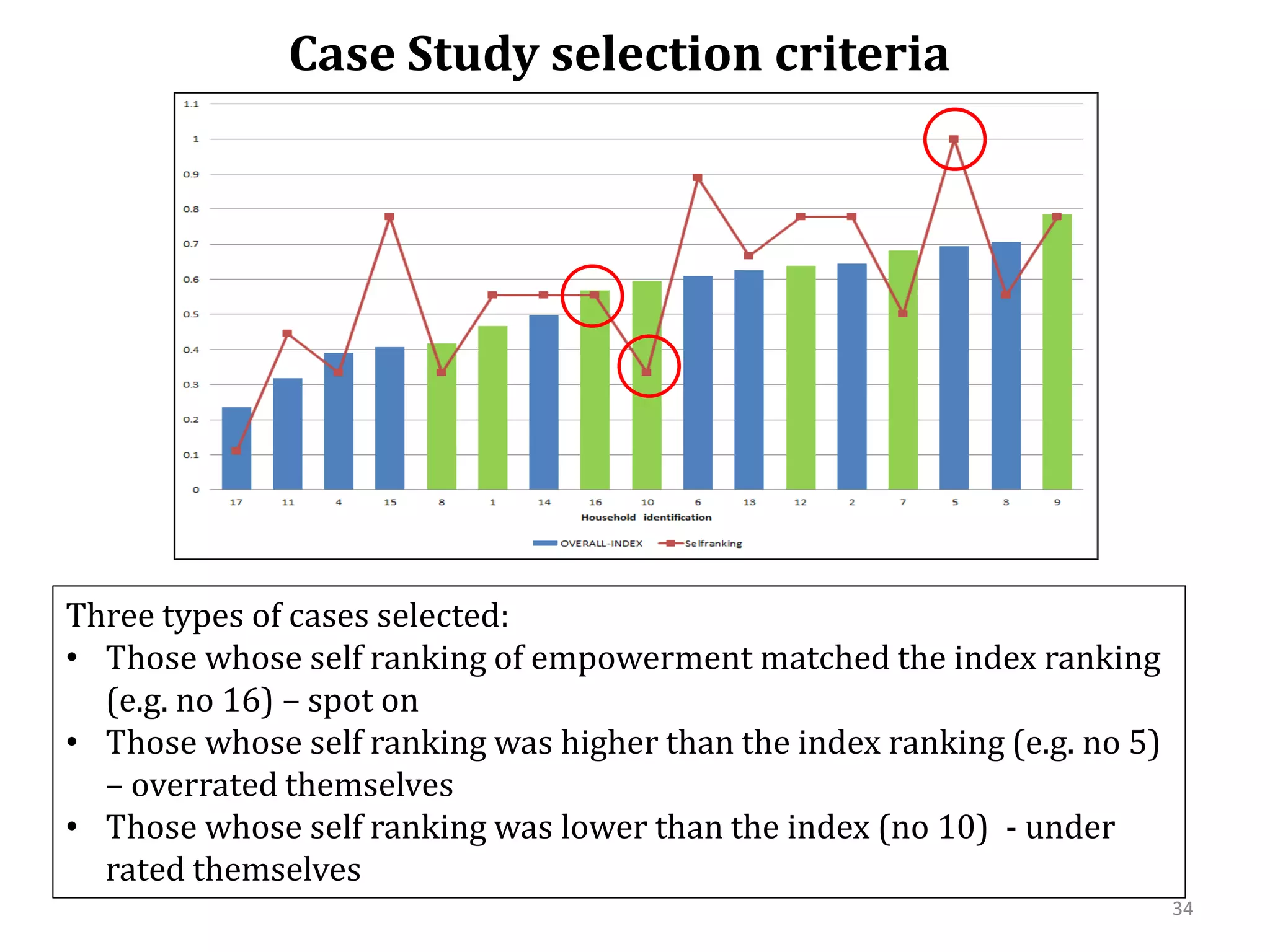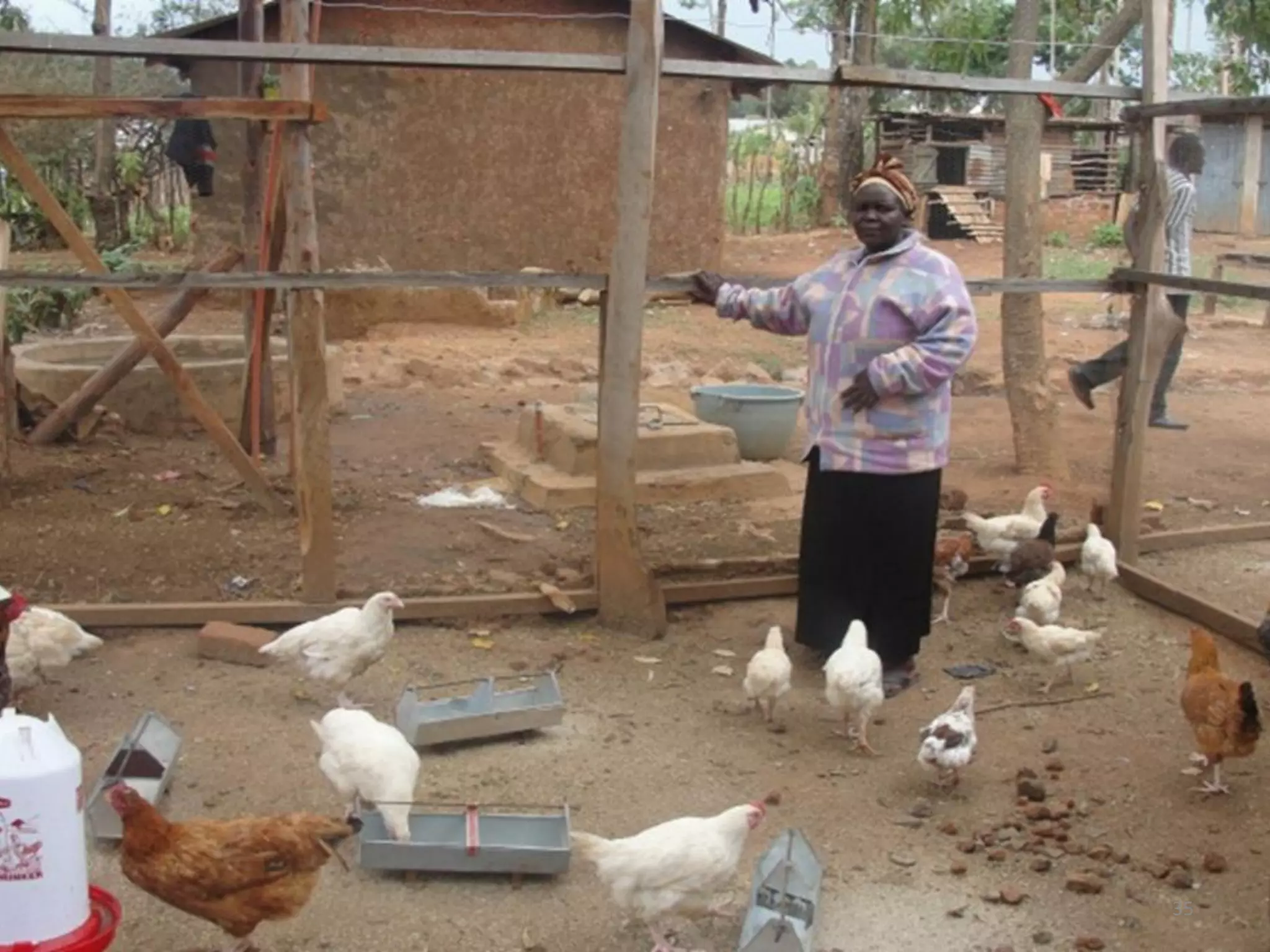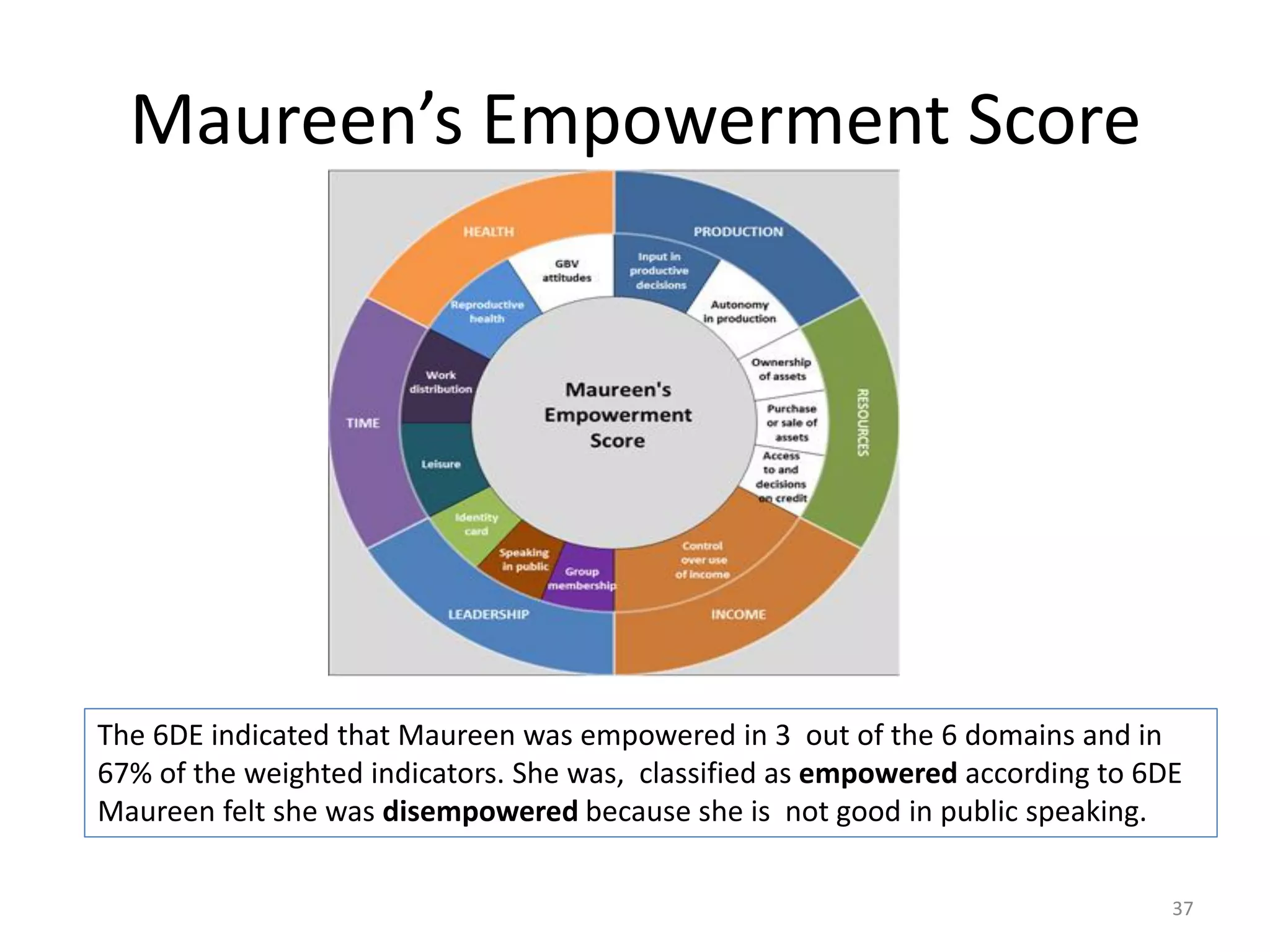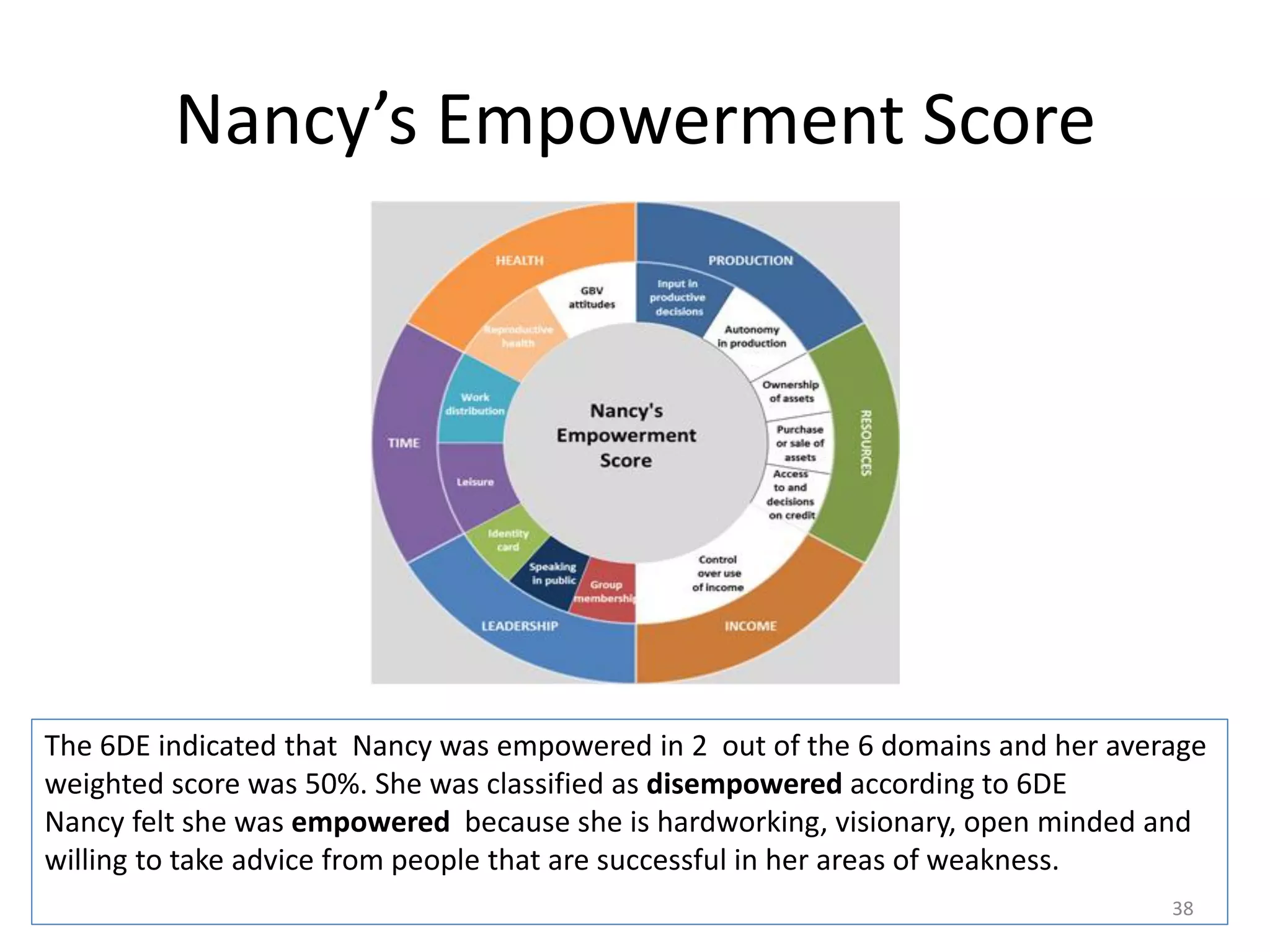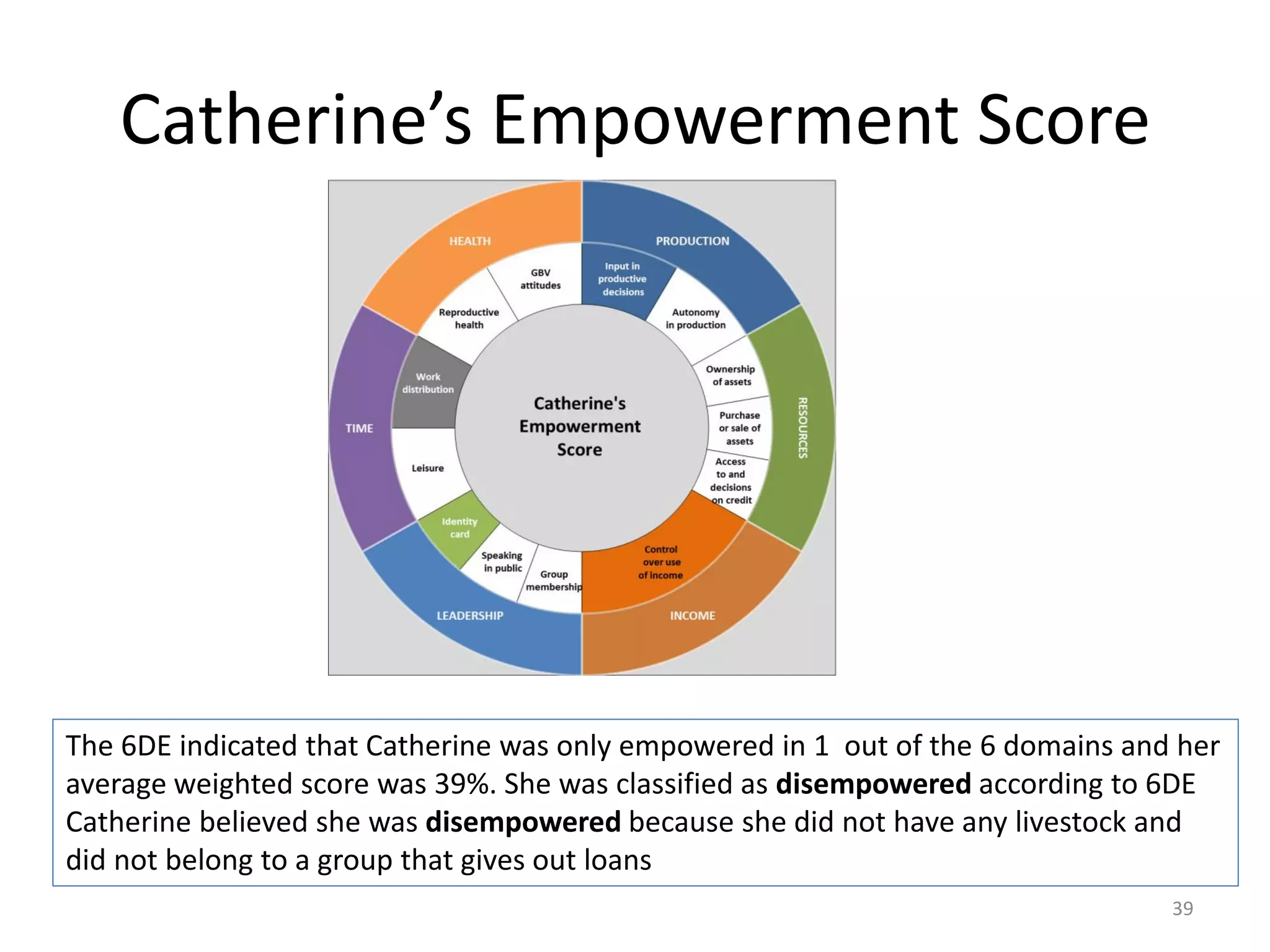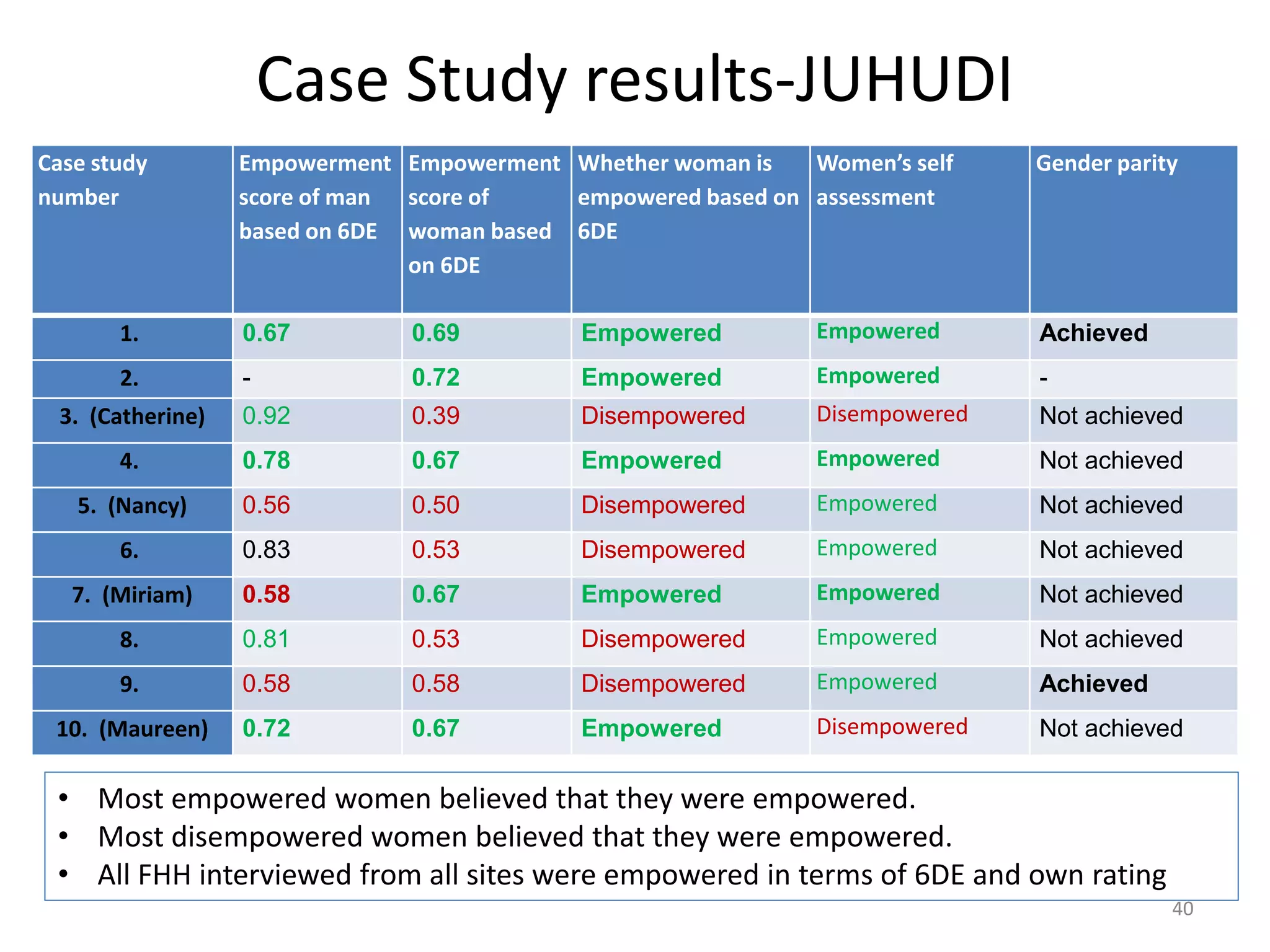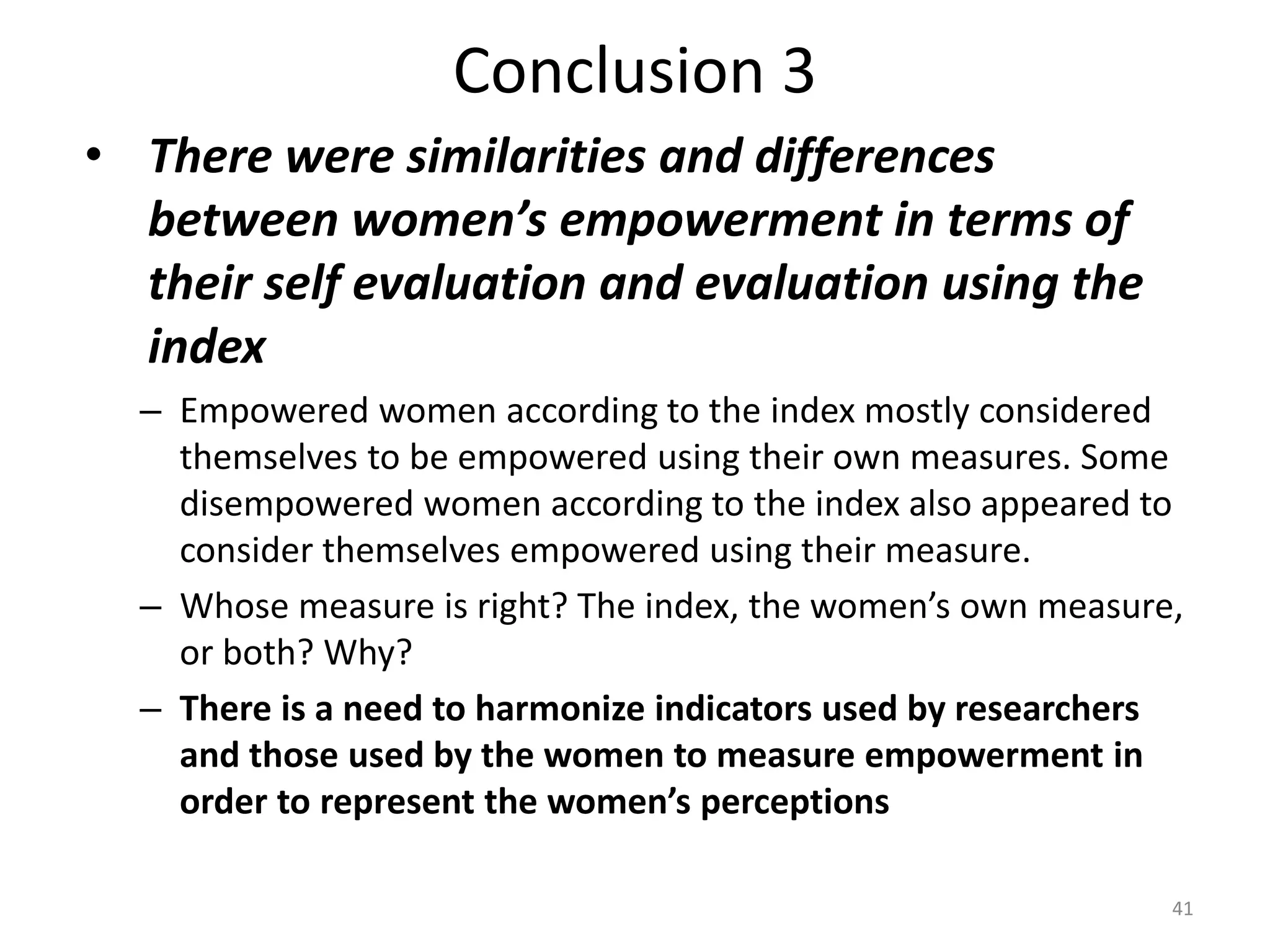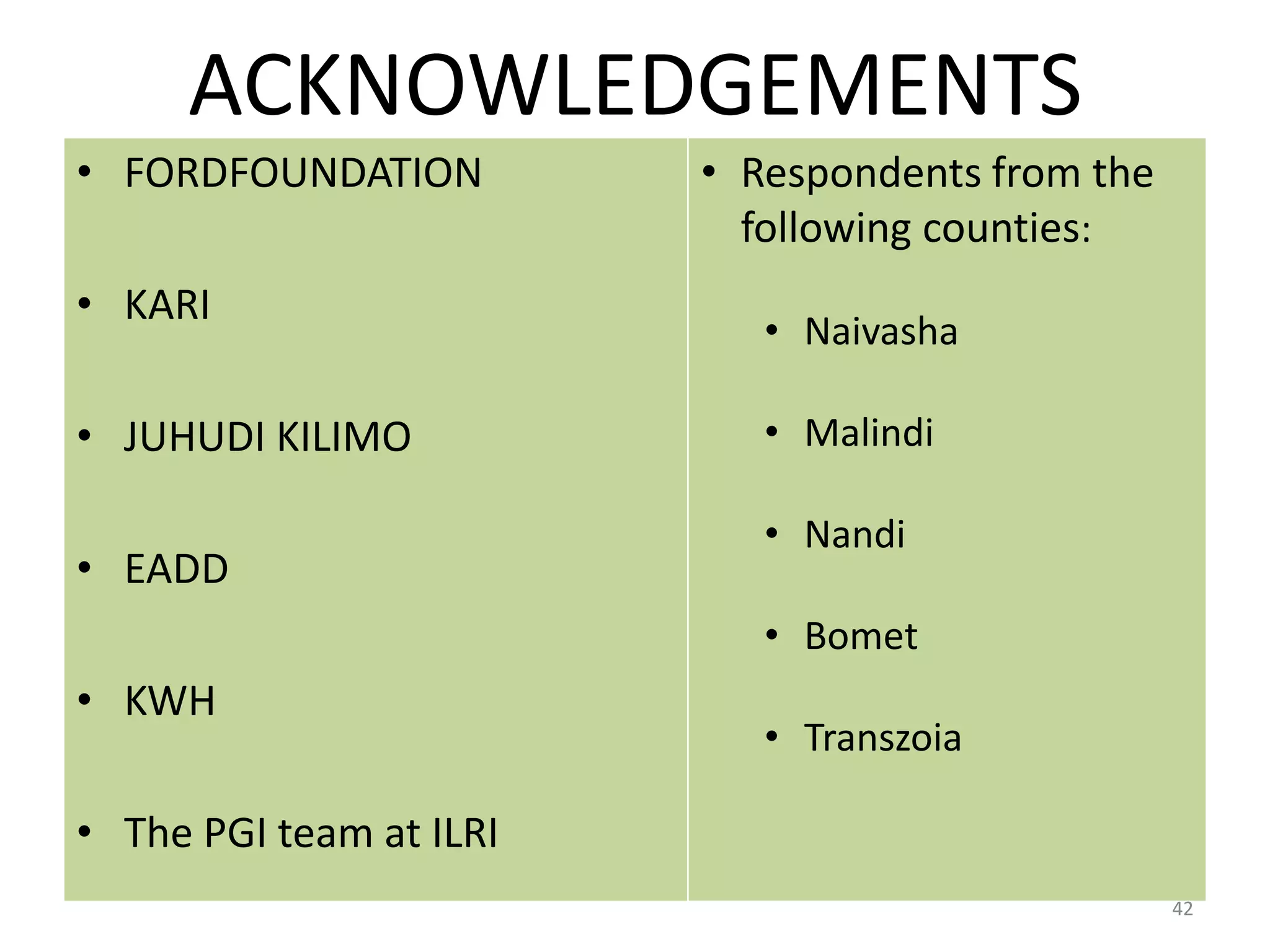The document evaluates the impact of livestock microcredit and value chain programs on women's empowerment through the Women's Empowerment in Agriculture Index (WEAI). It addresses the interplay between economic opportunities, awareness of rights, and their collective effects on women's empowerment across different contexts and interventions. The study highlights that empowerment patterns vary based on location and intervention type, emphasizing the necessity for tailored development strategies in achieving gender equality.
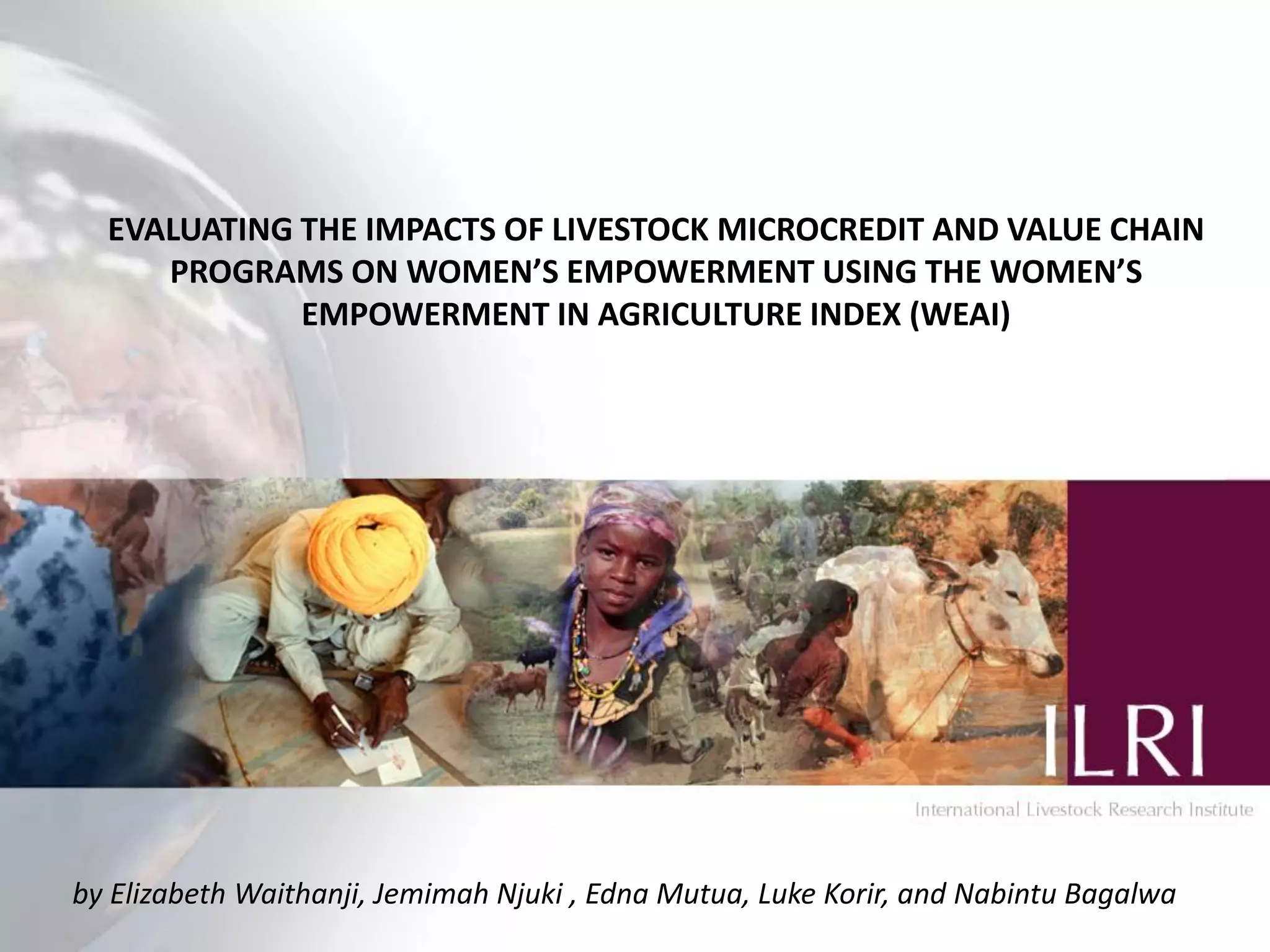

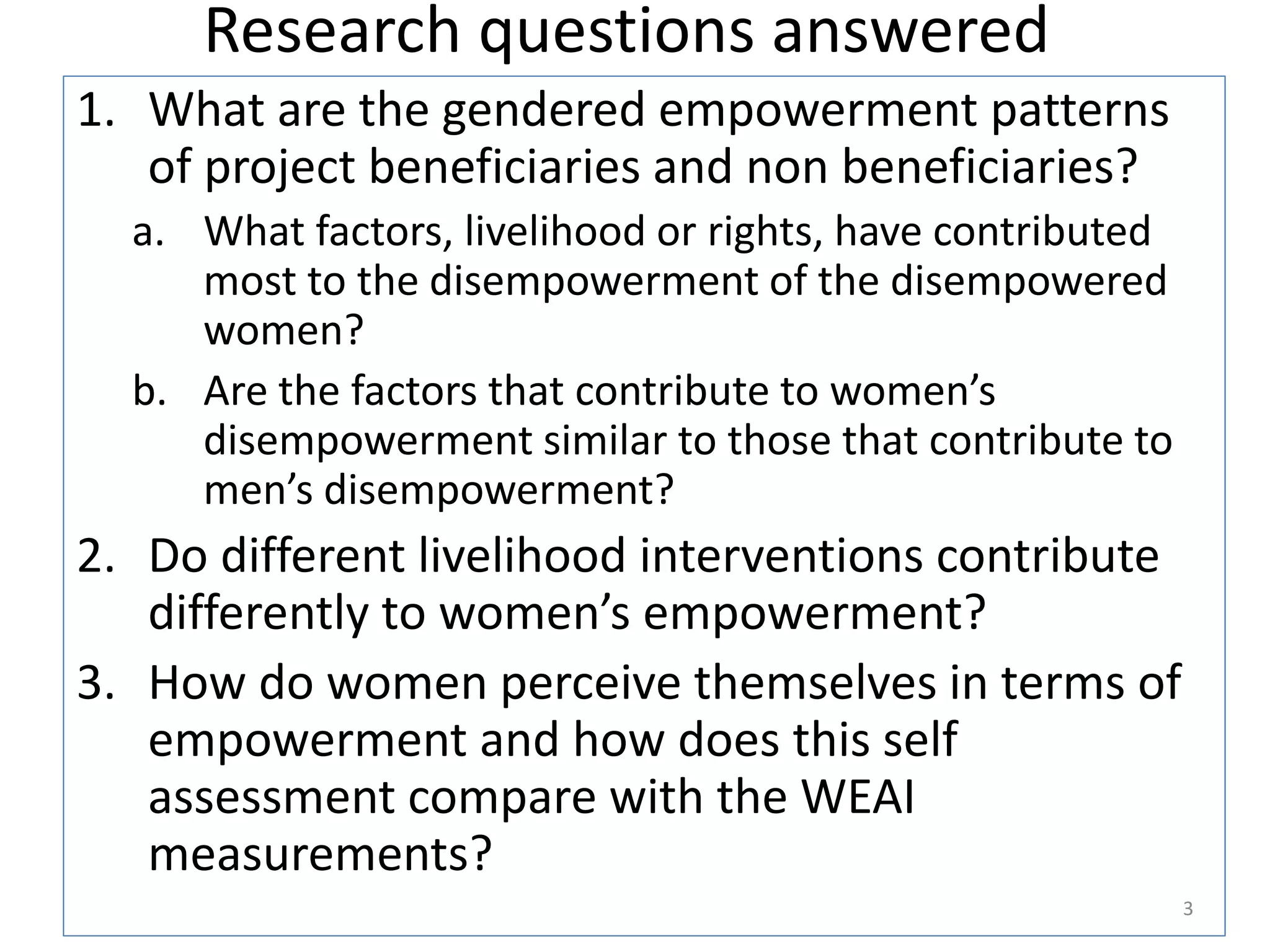

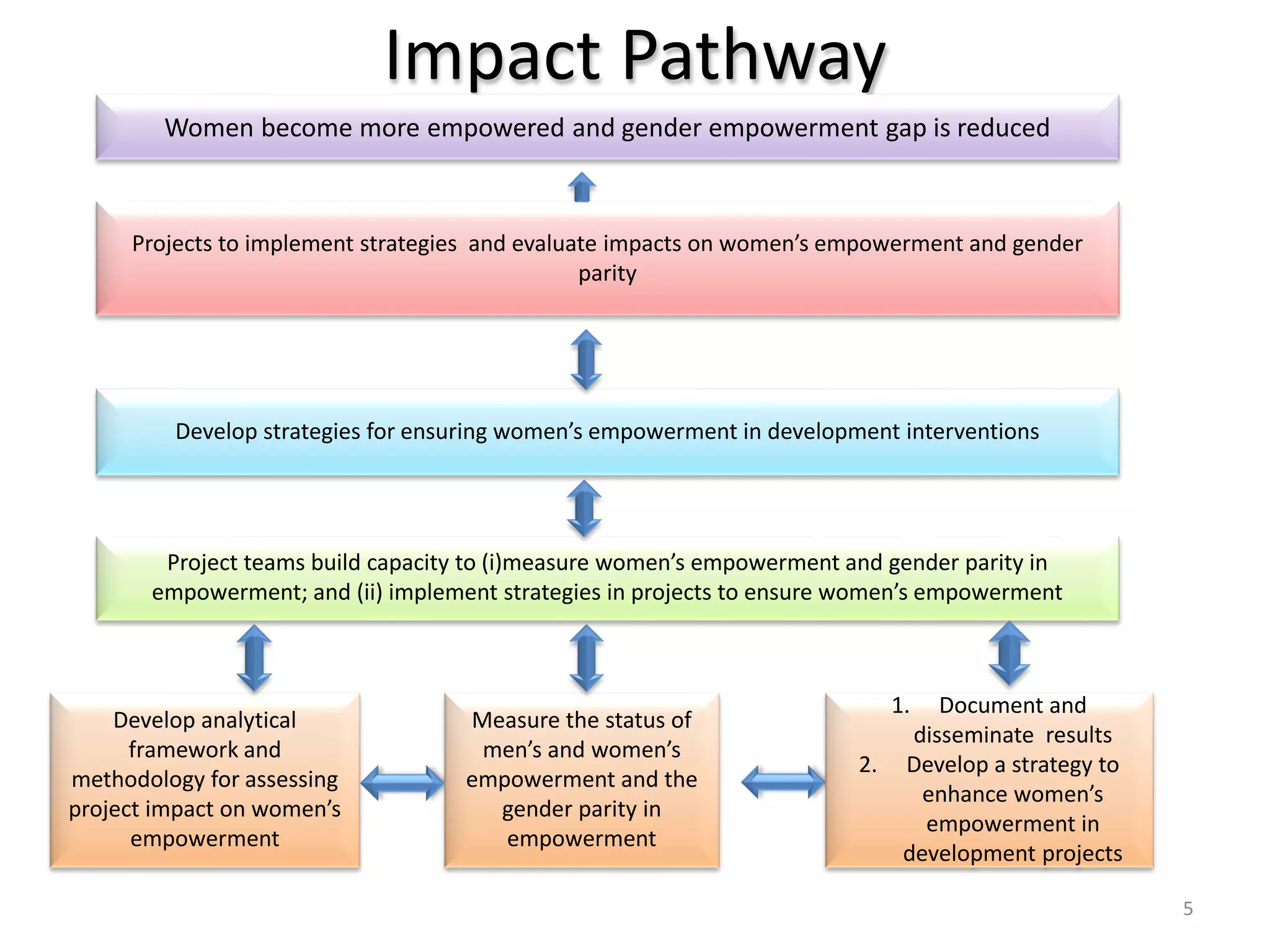
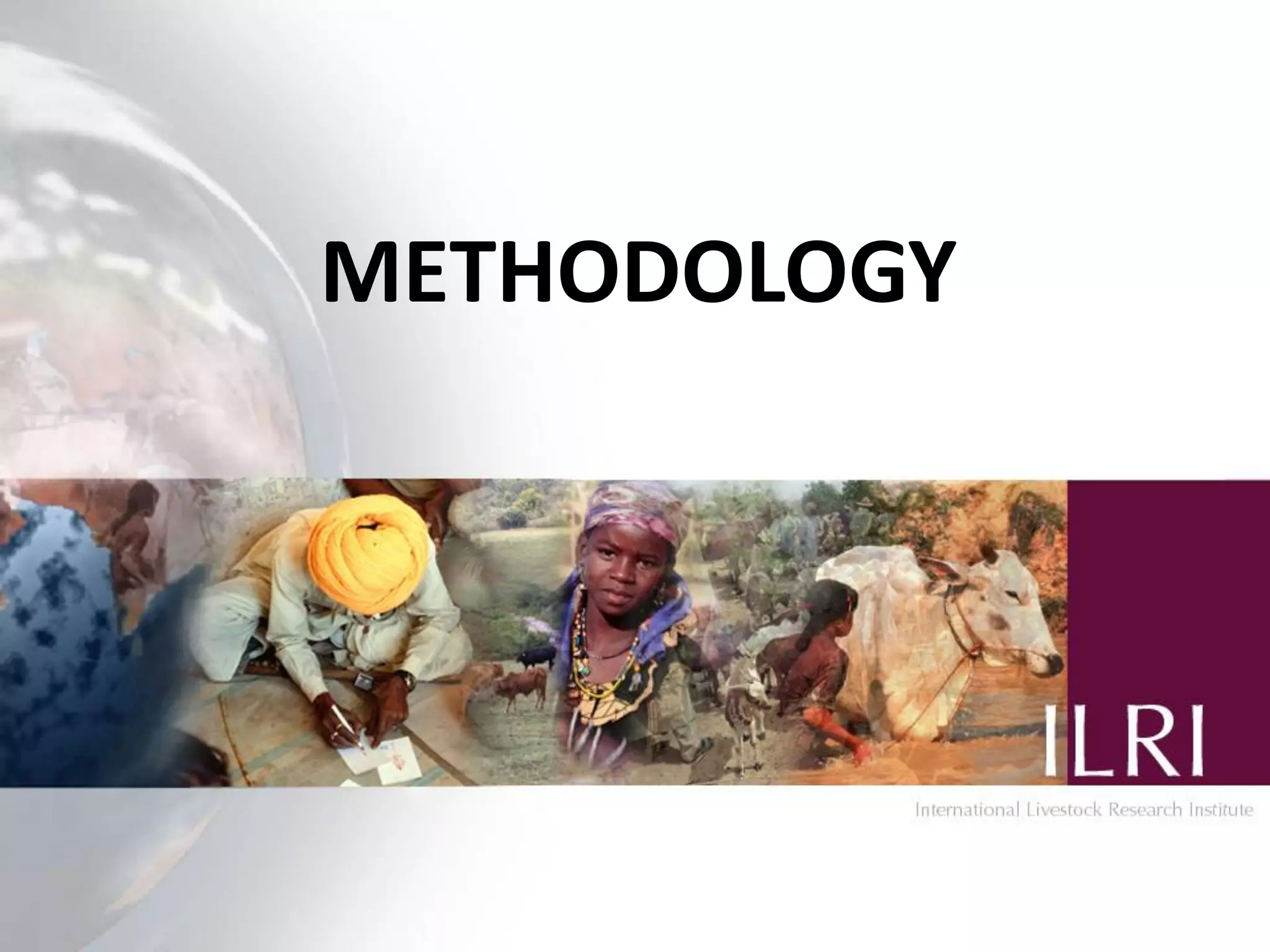
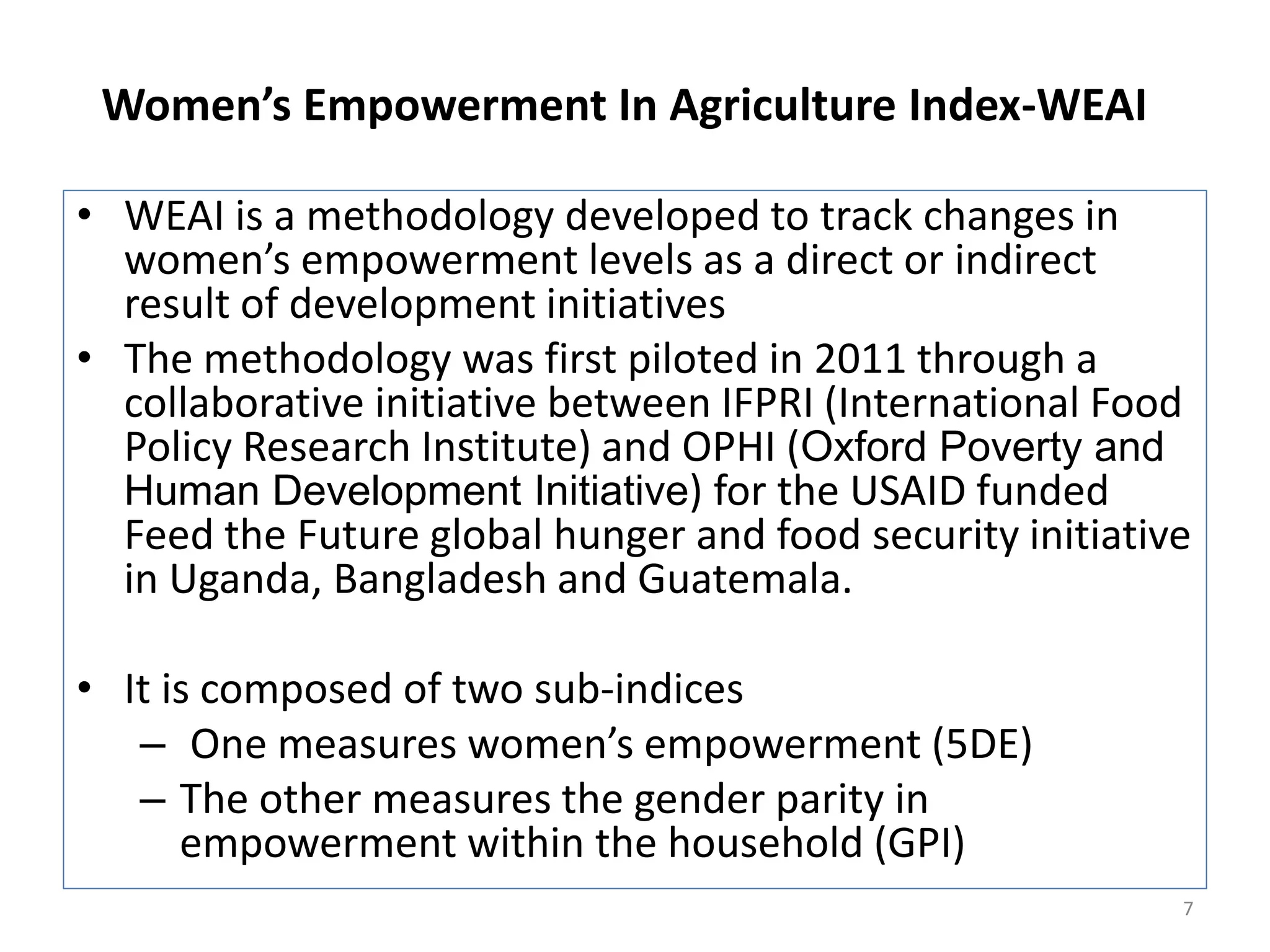
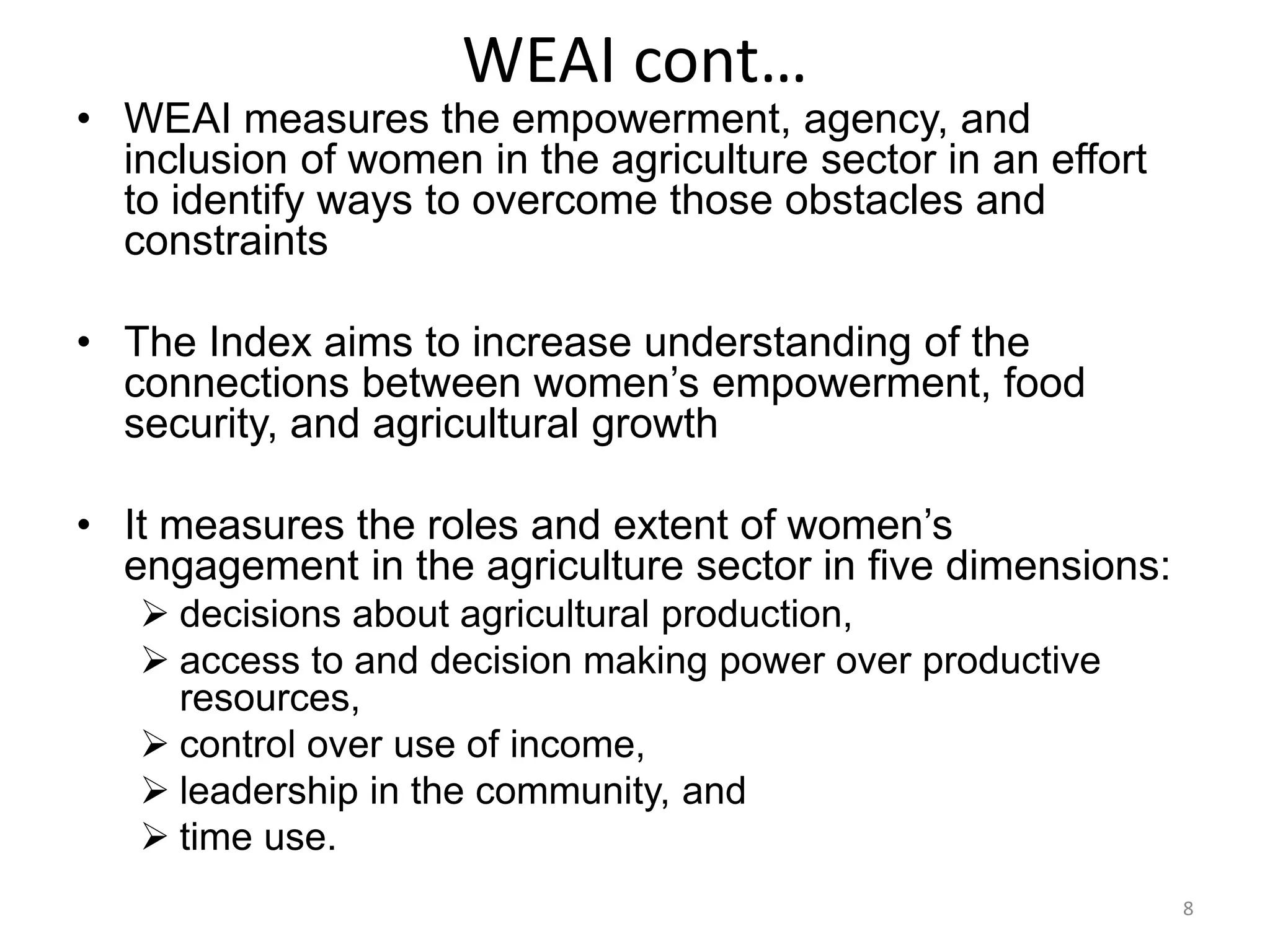
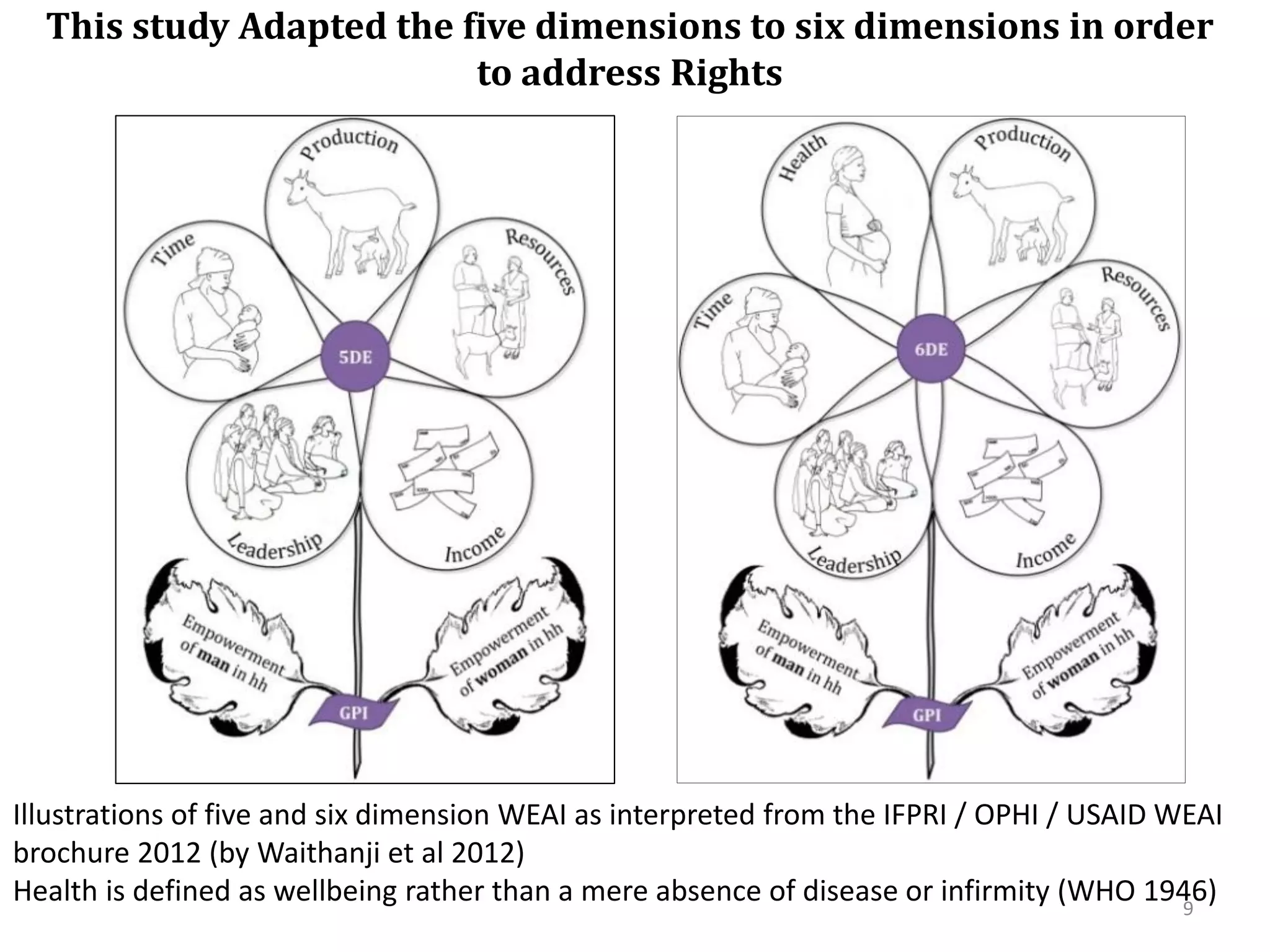
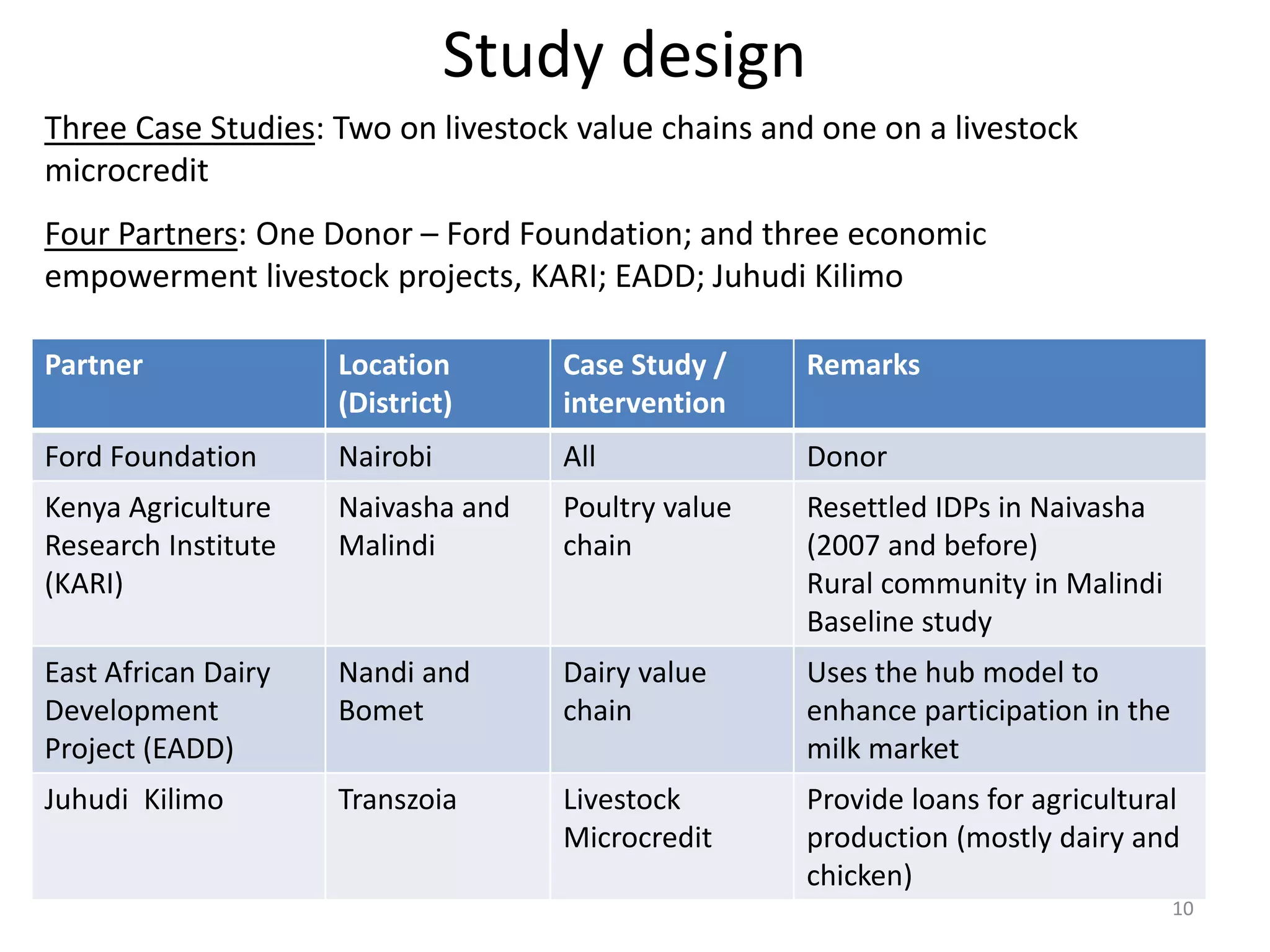
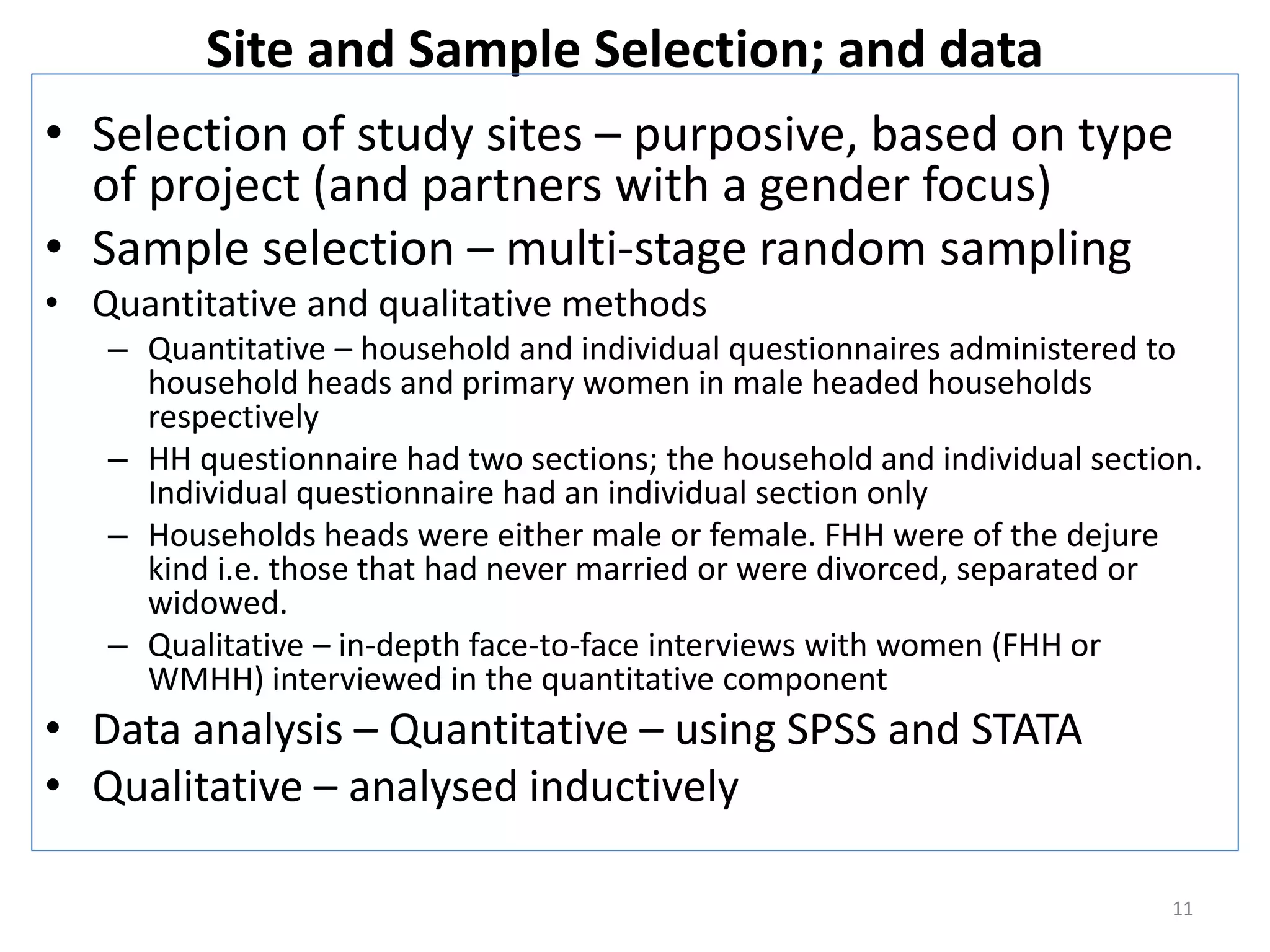

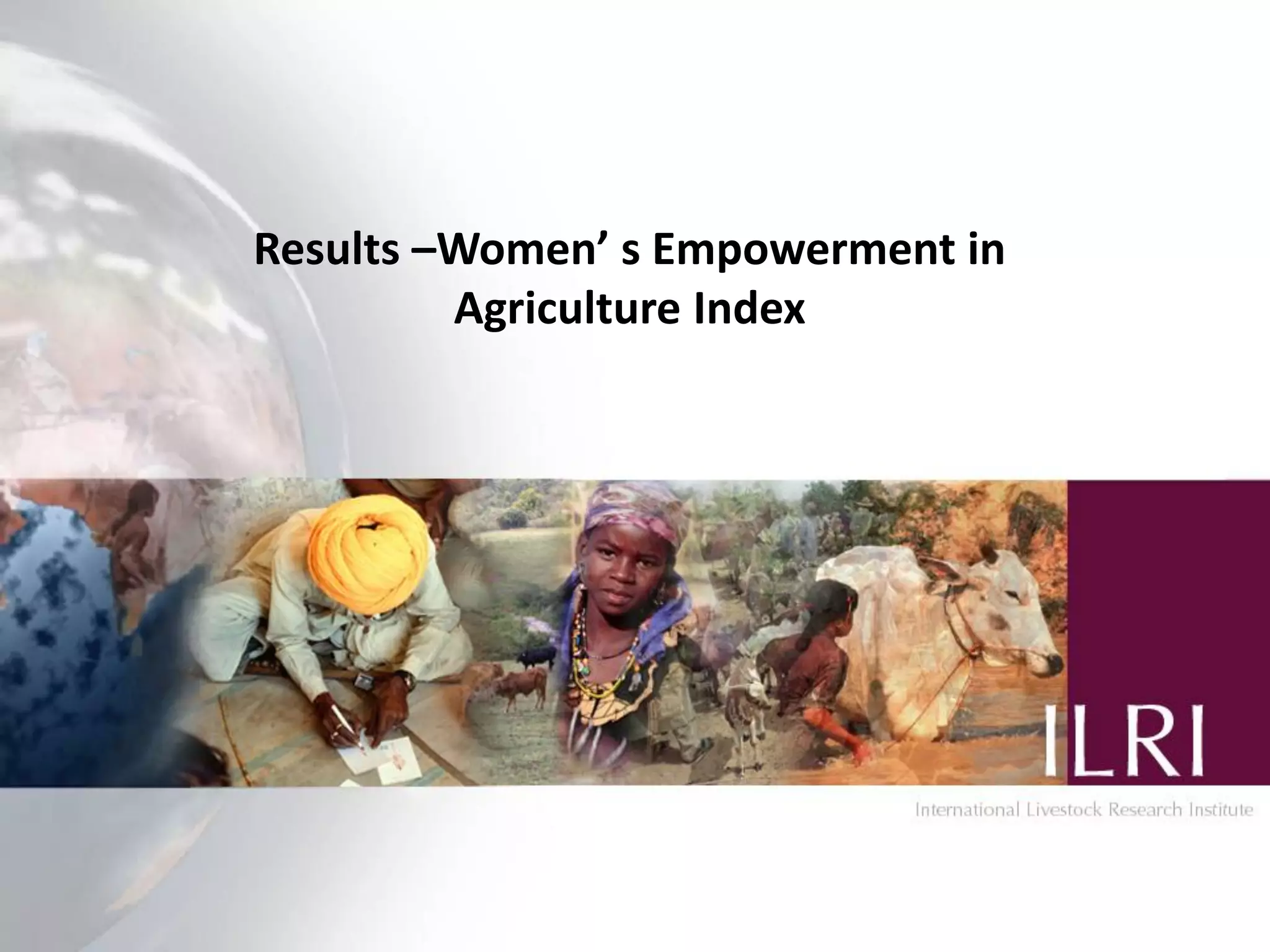
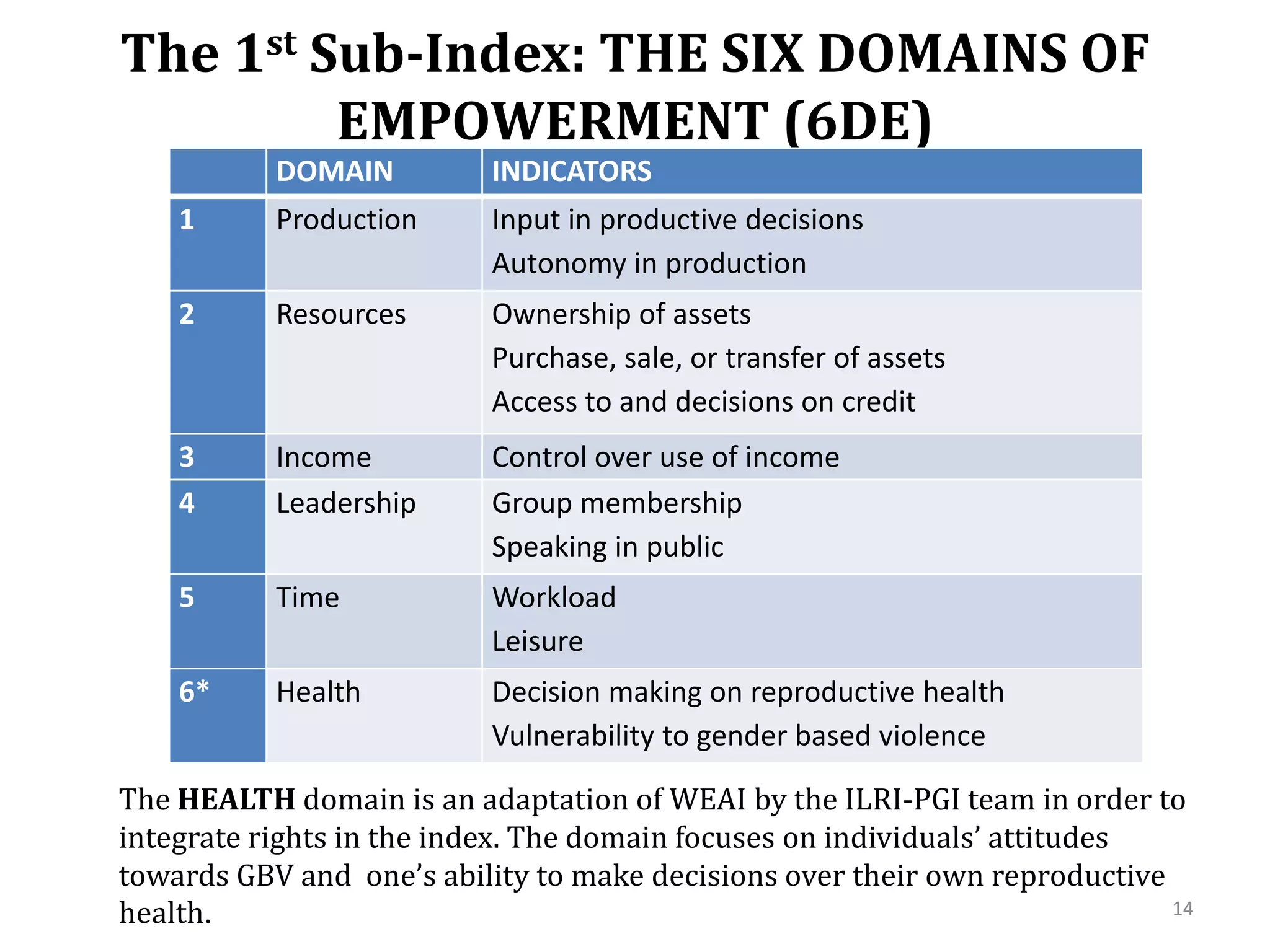
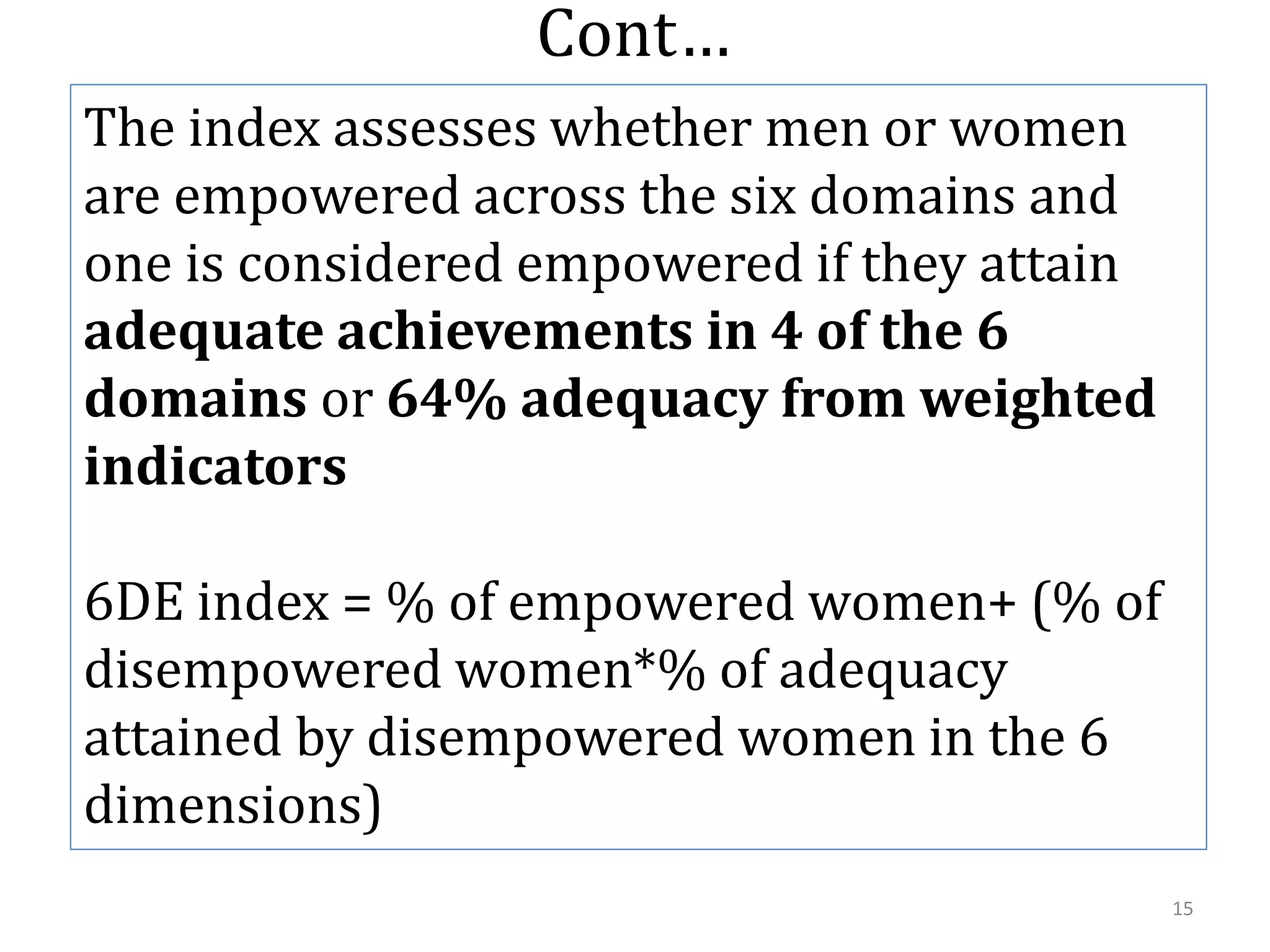
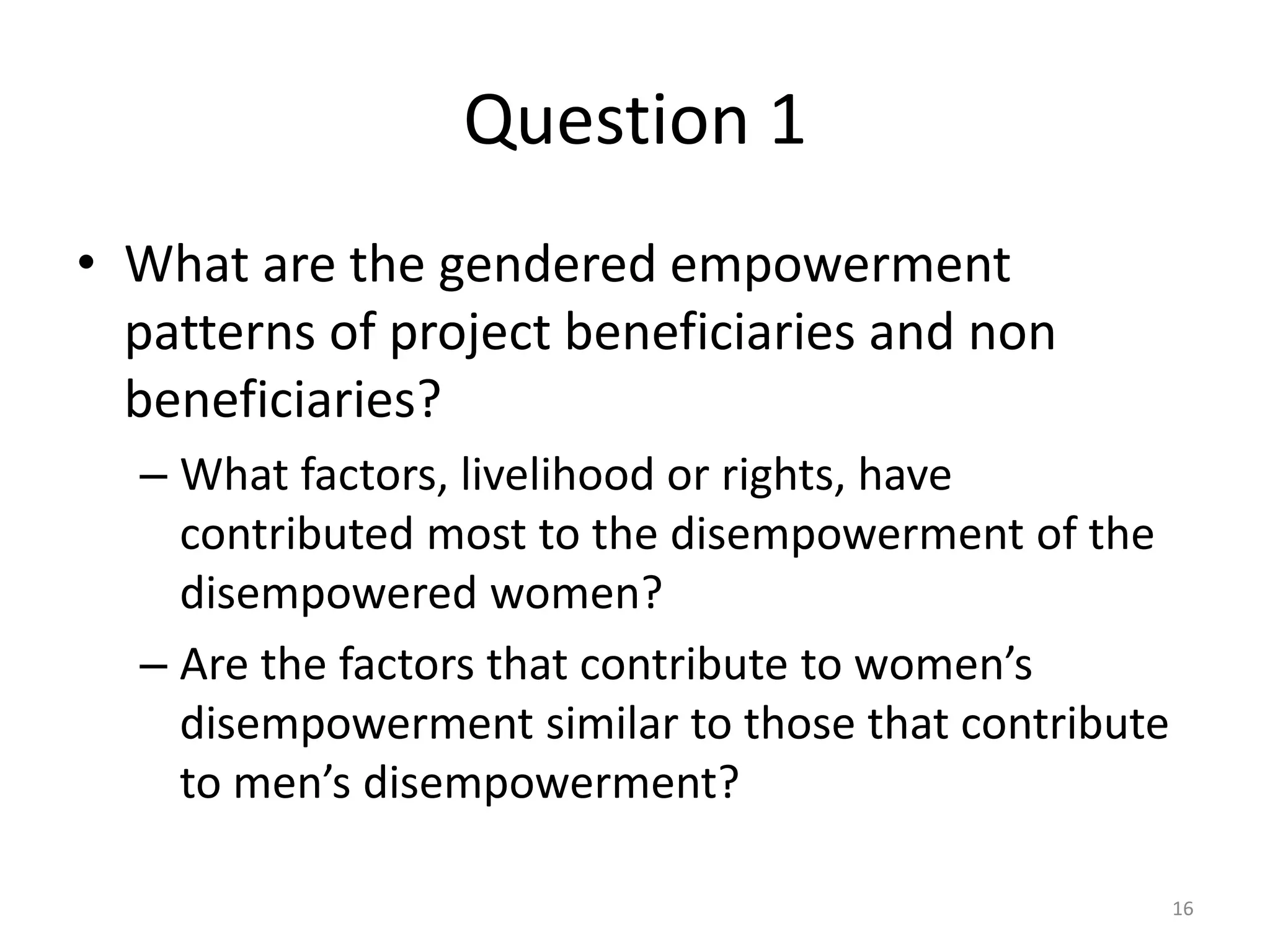
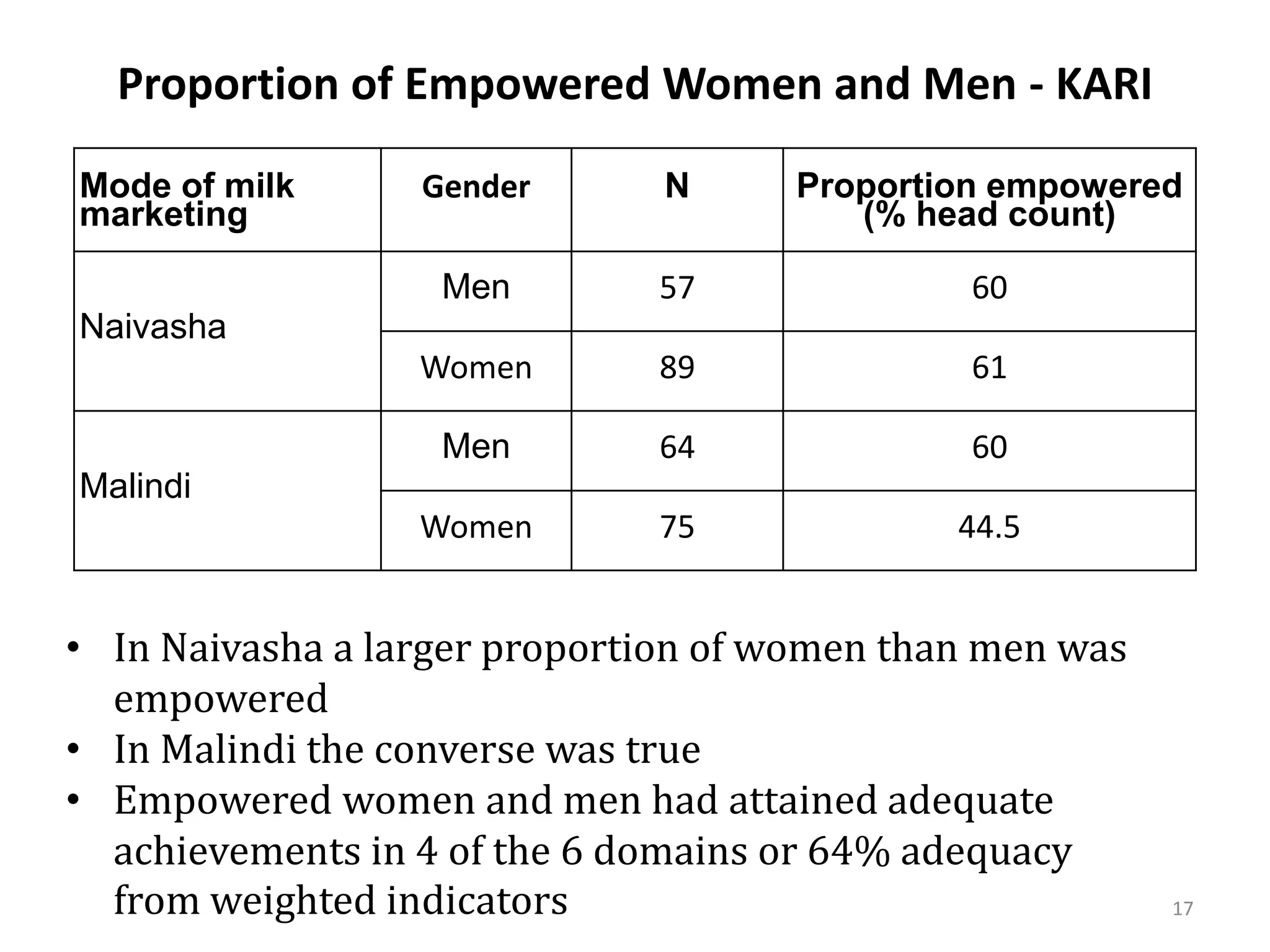
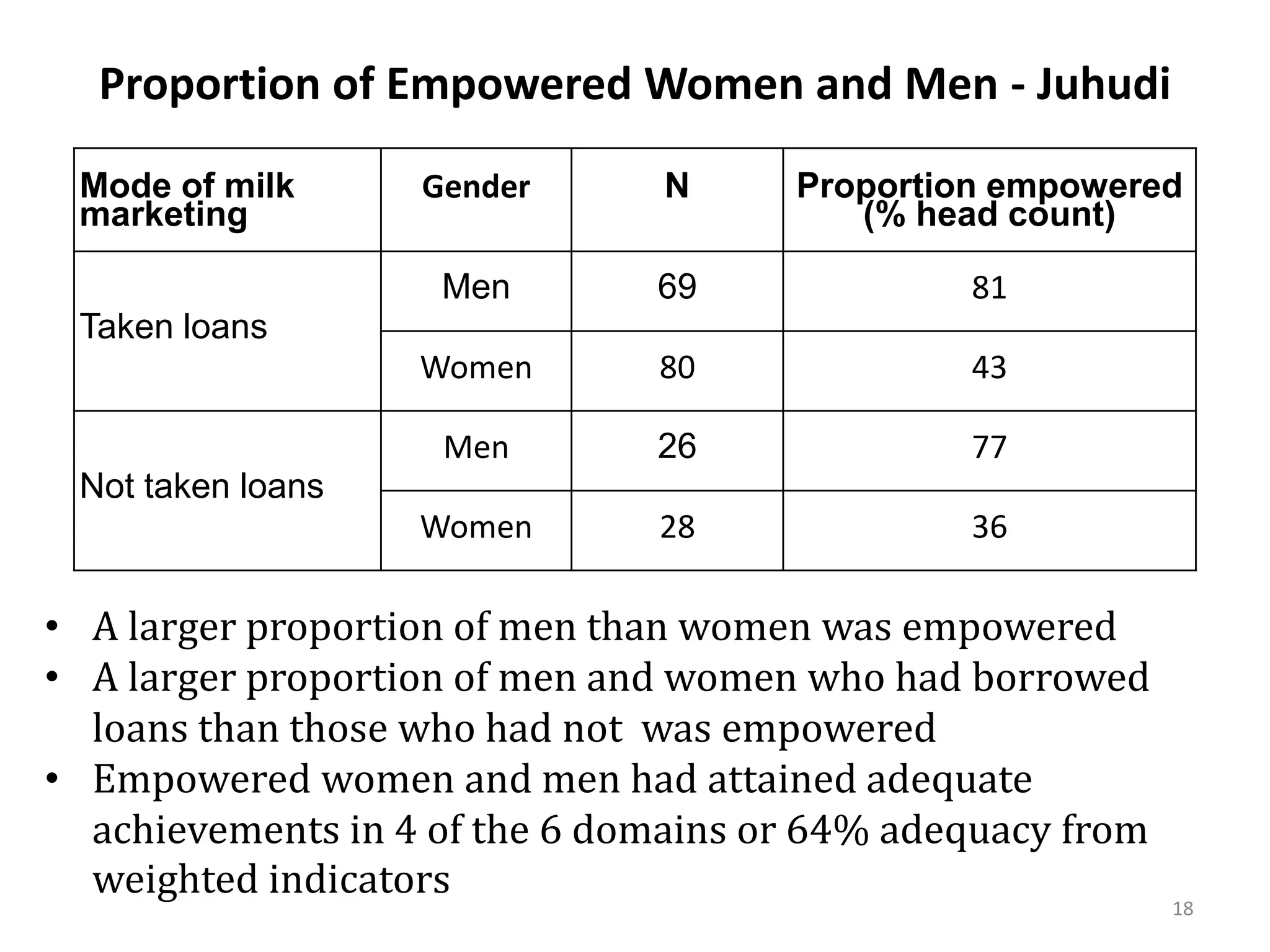

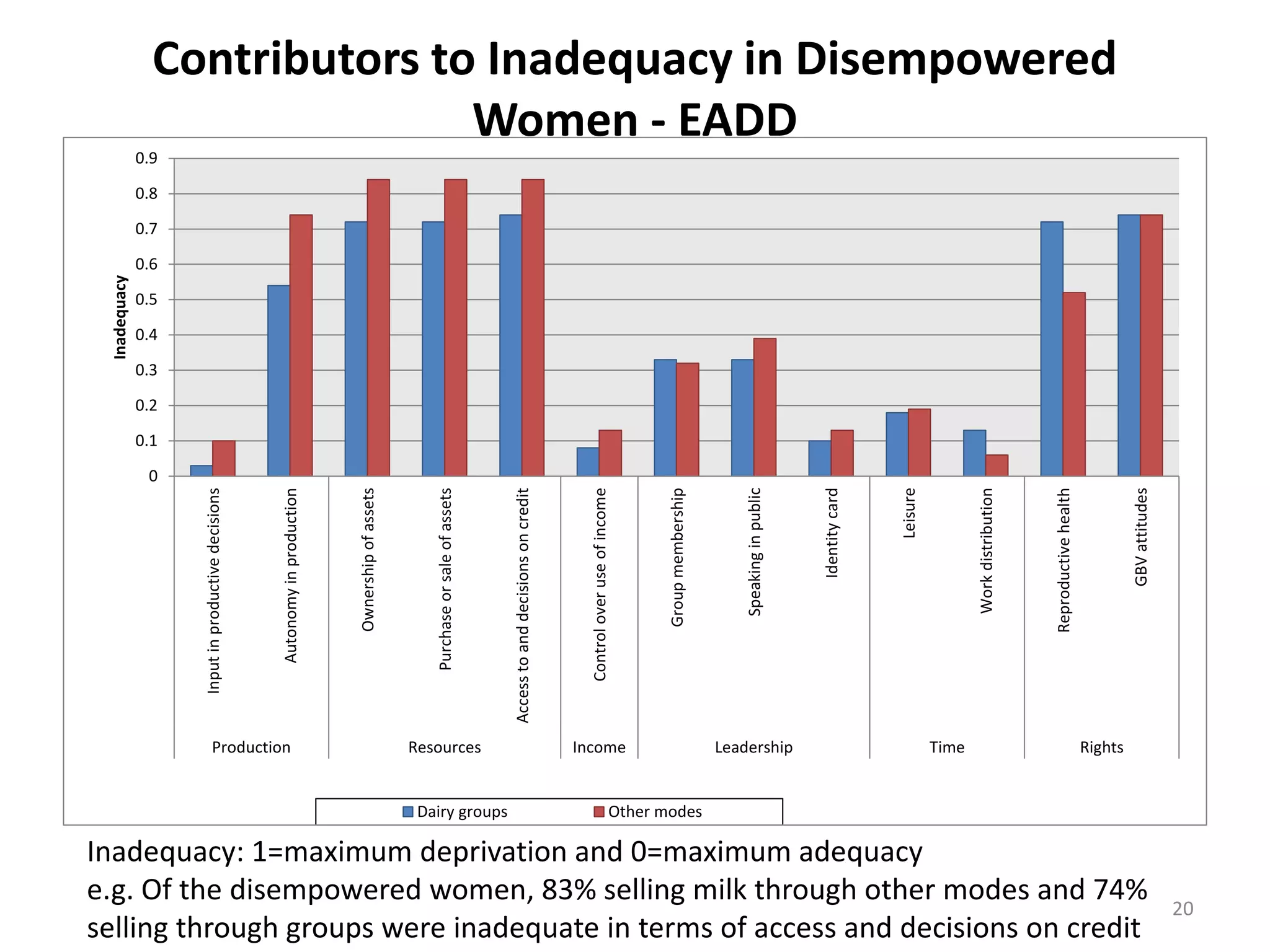
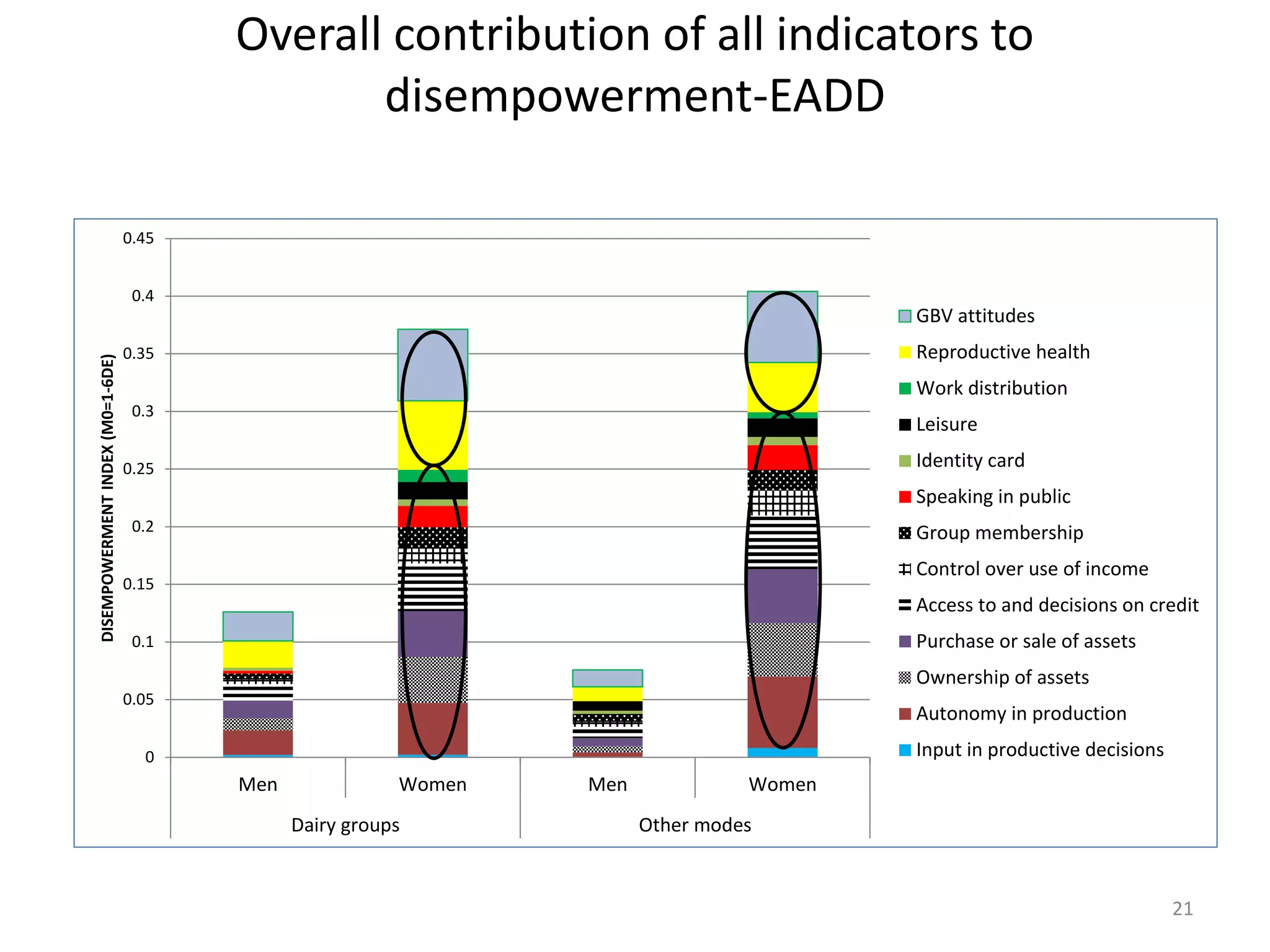


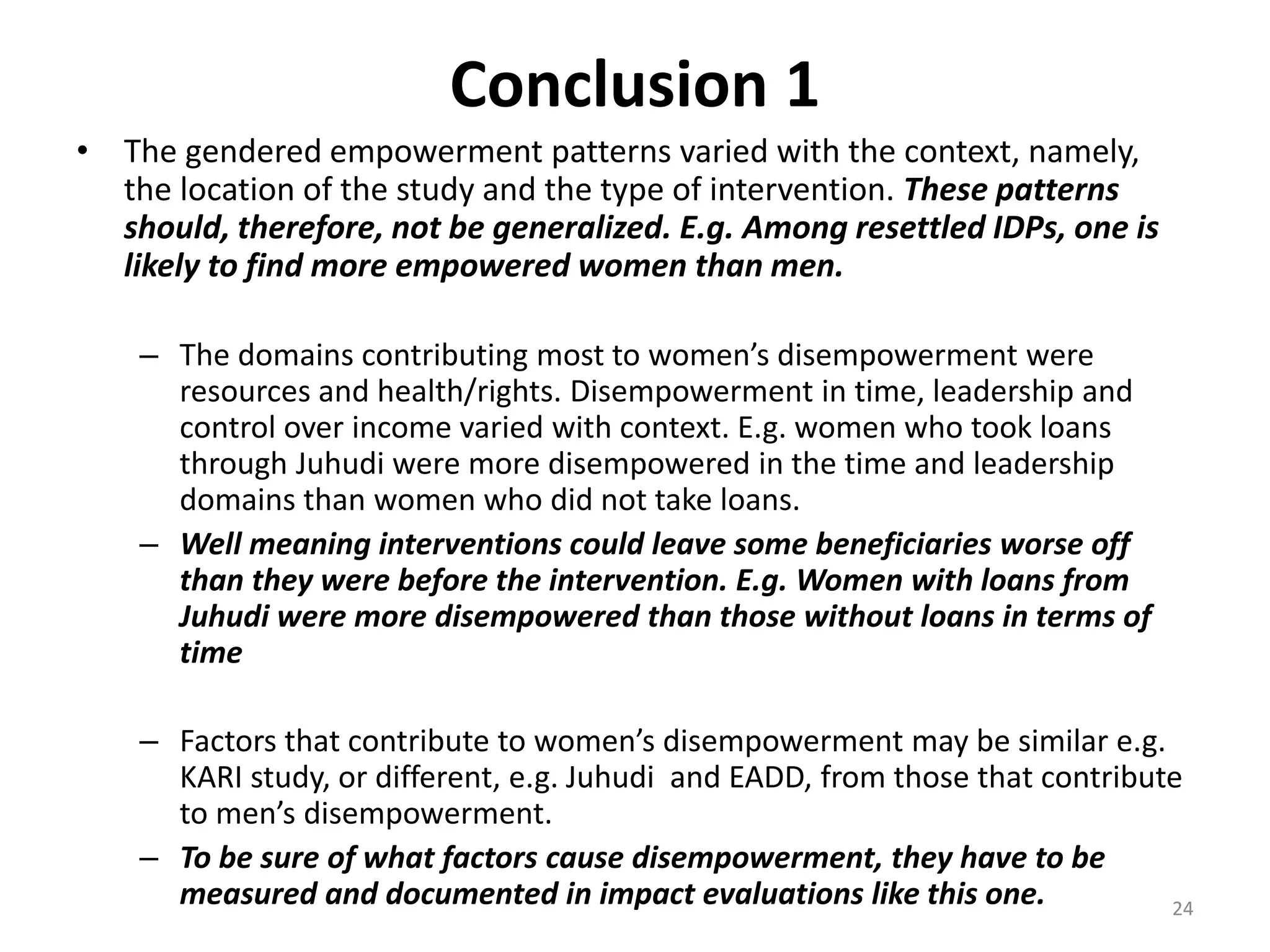
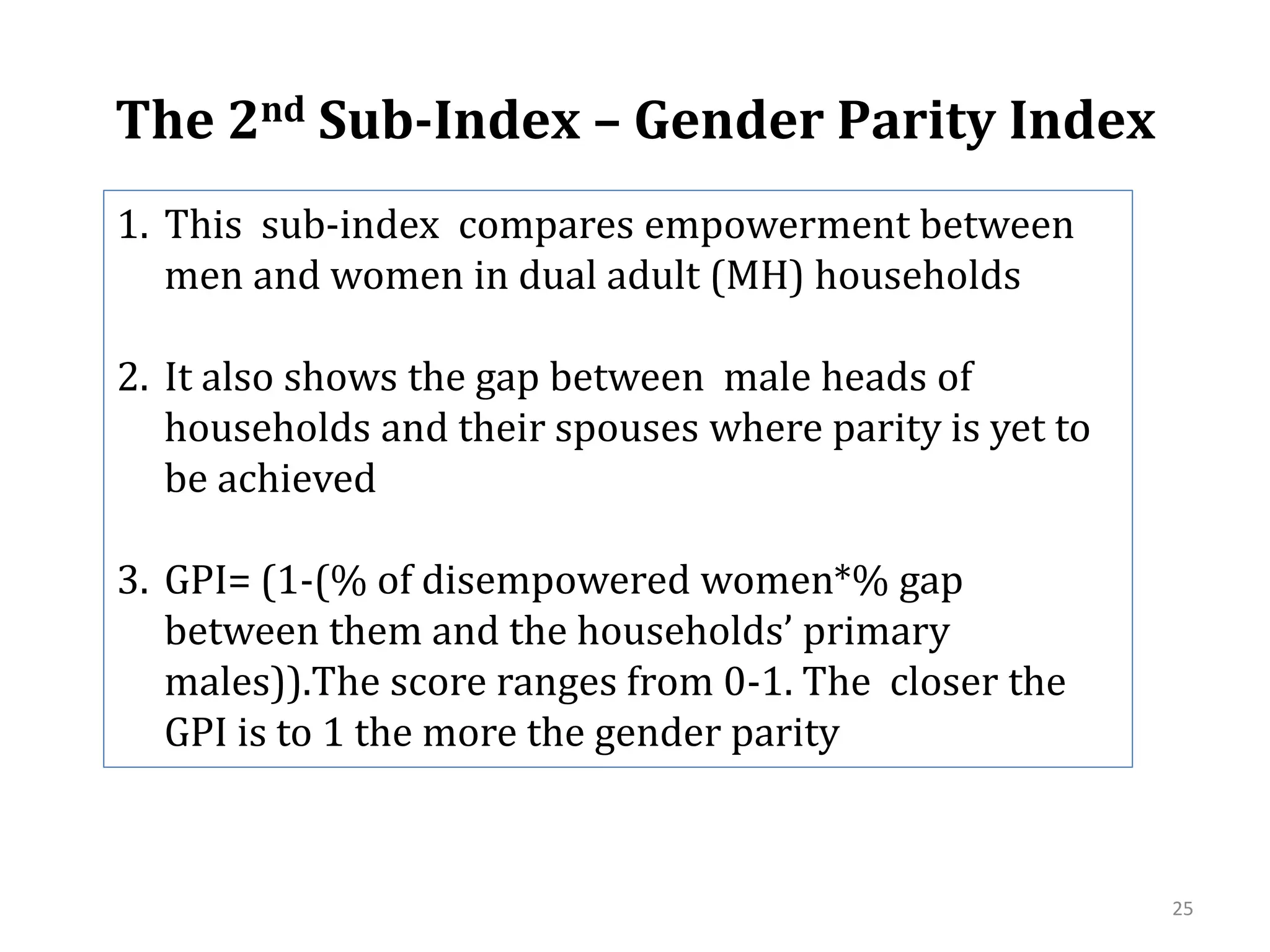

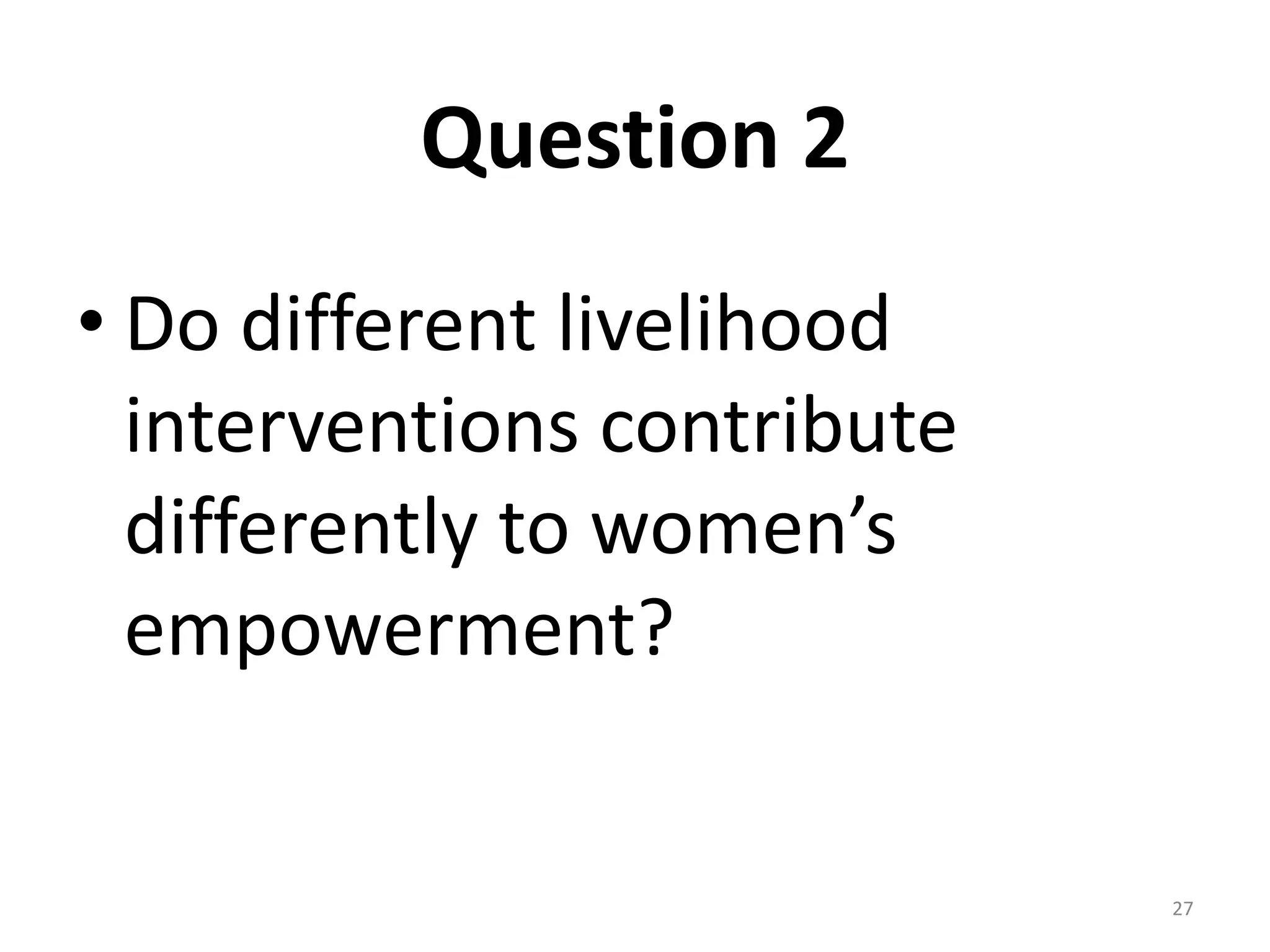
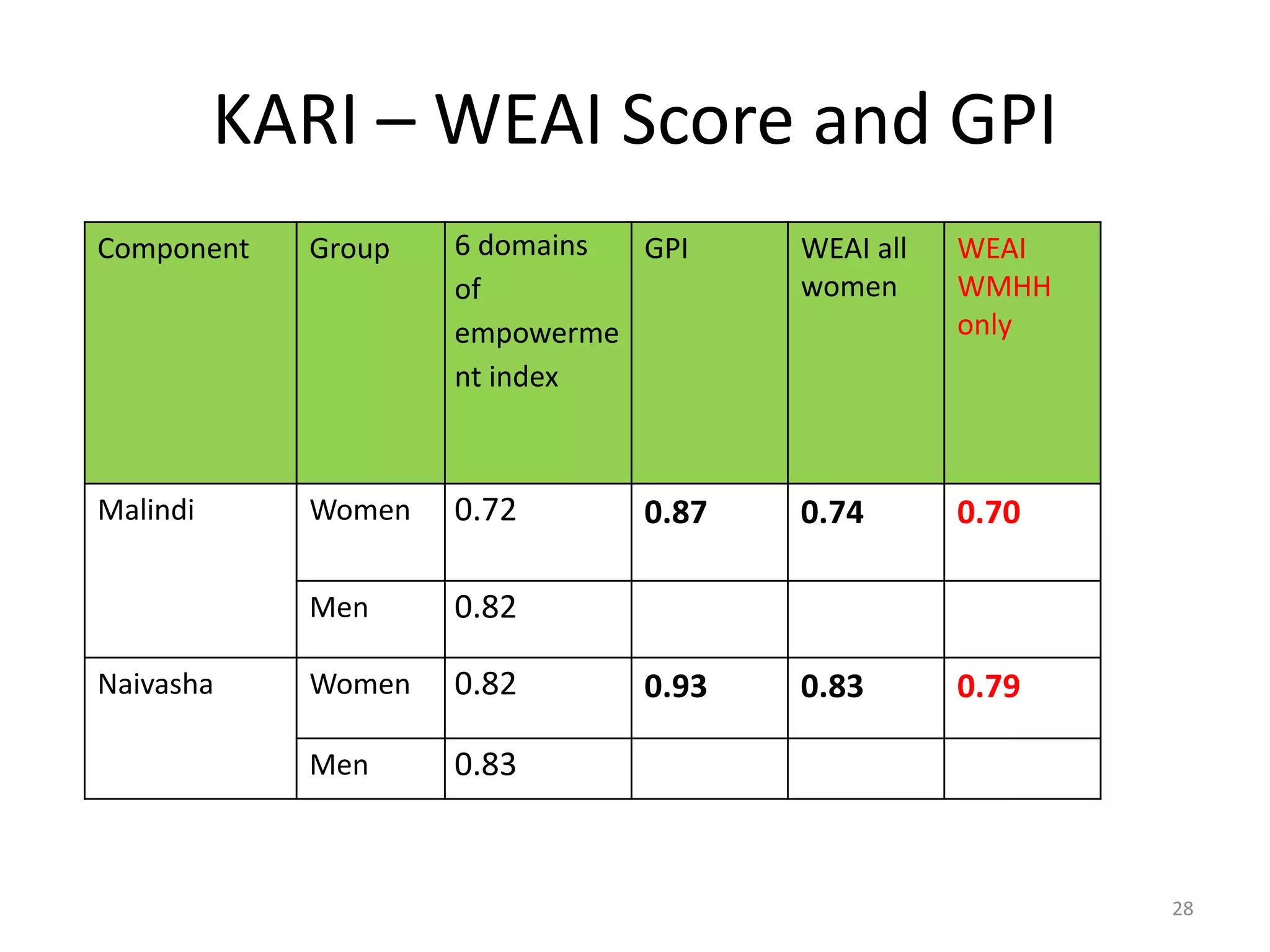
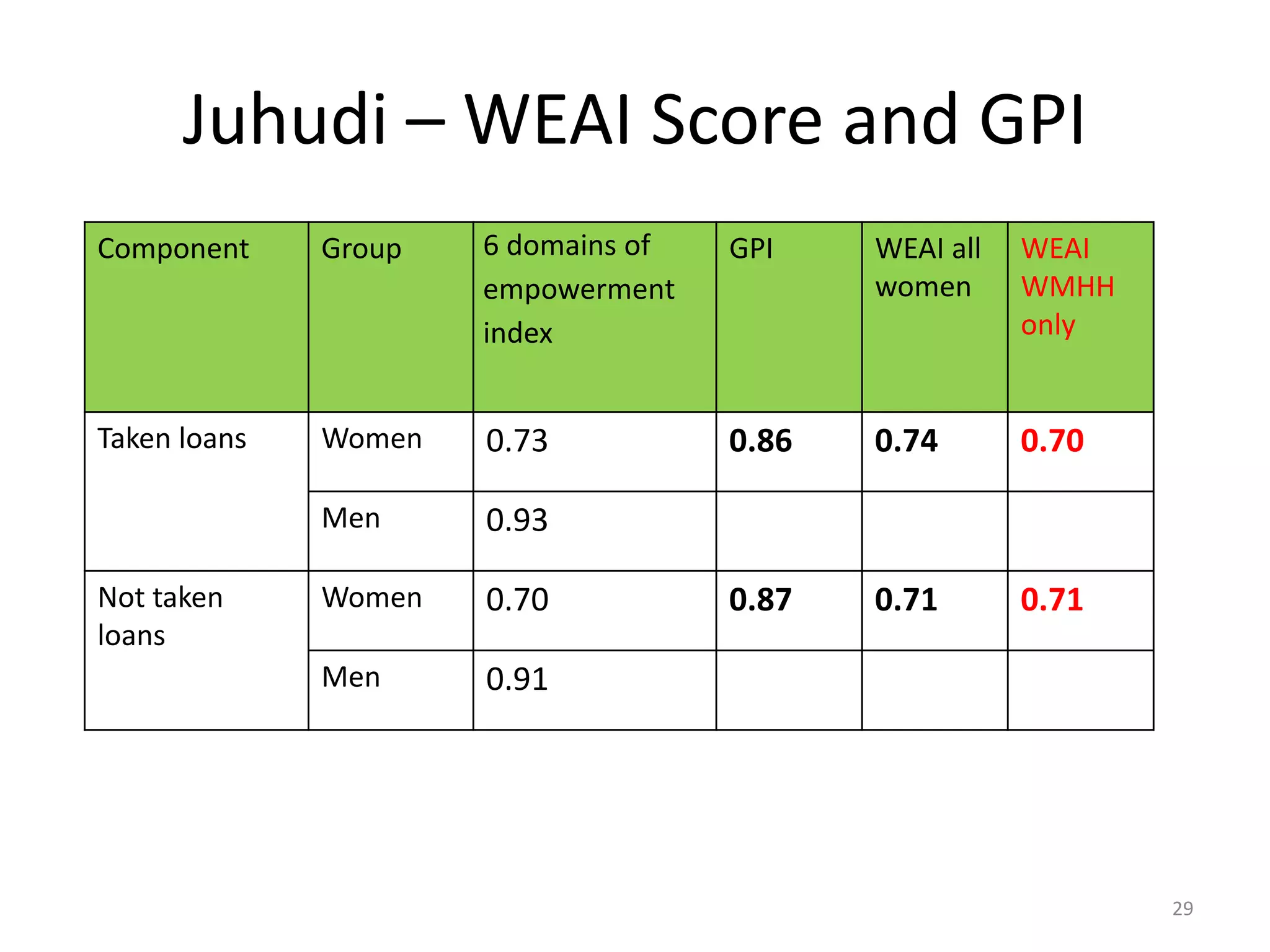
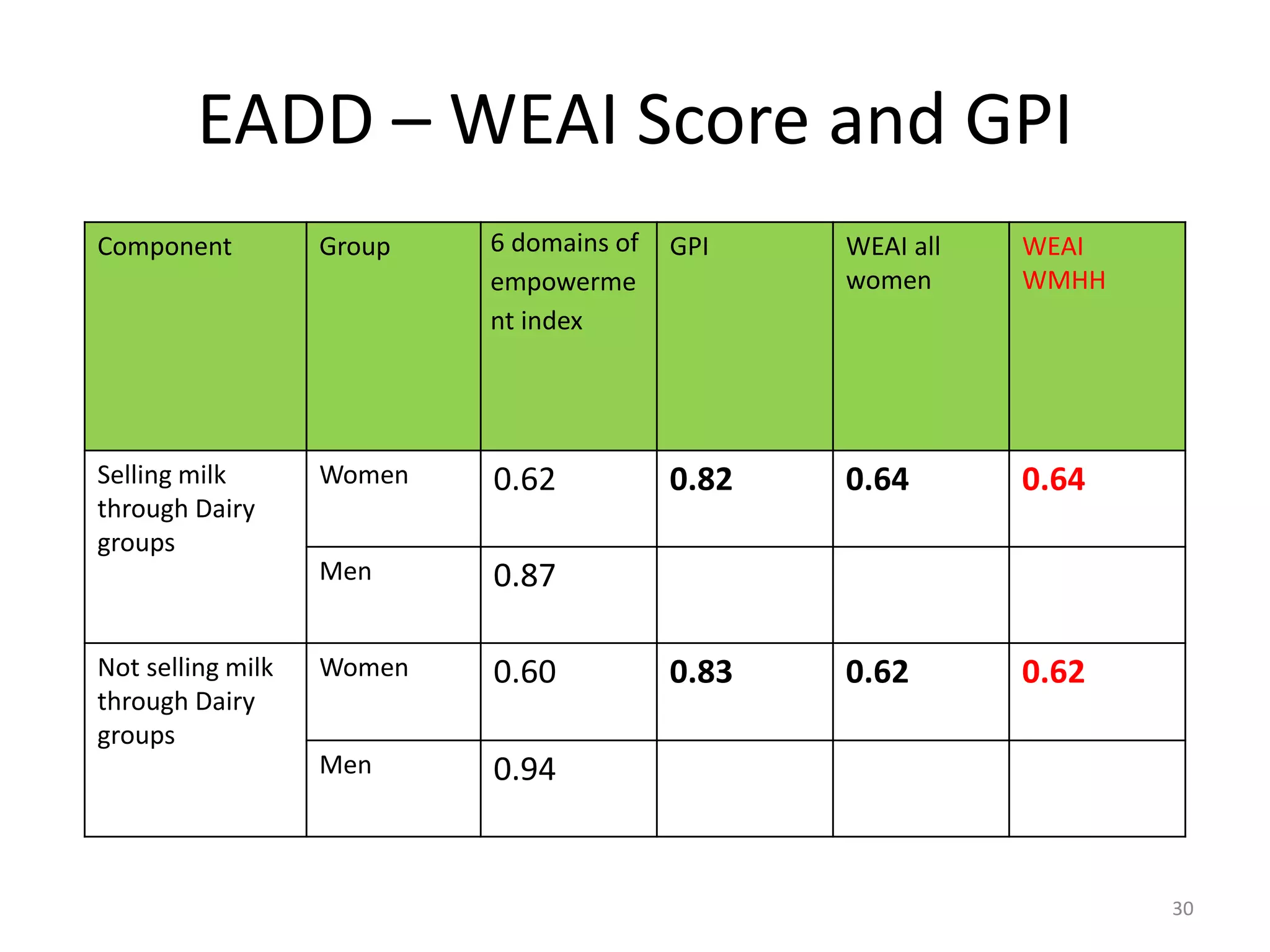
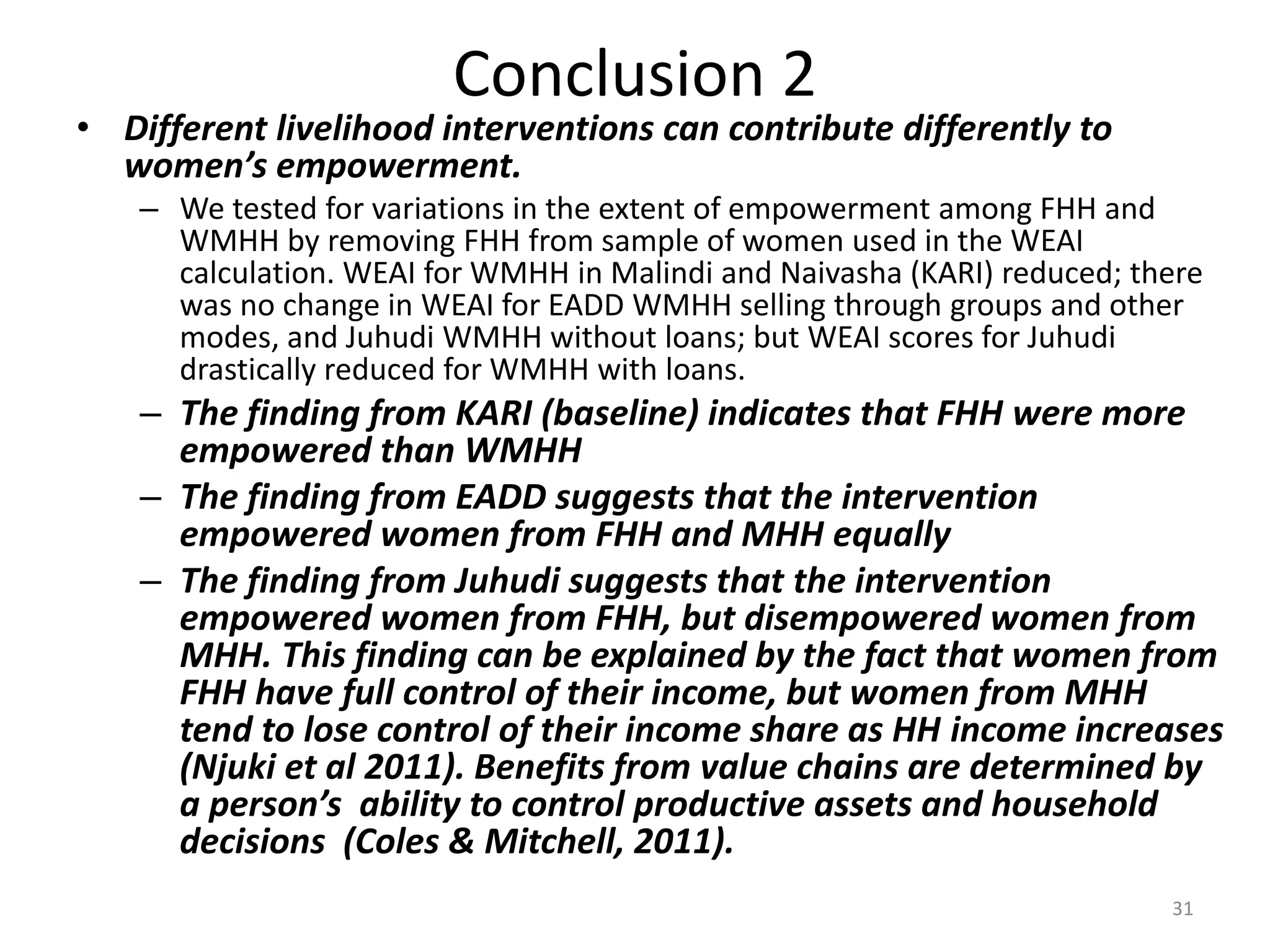
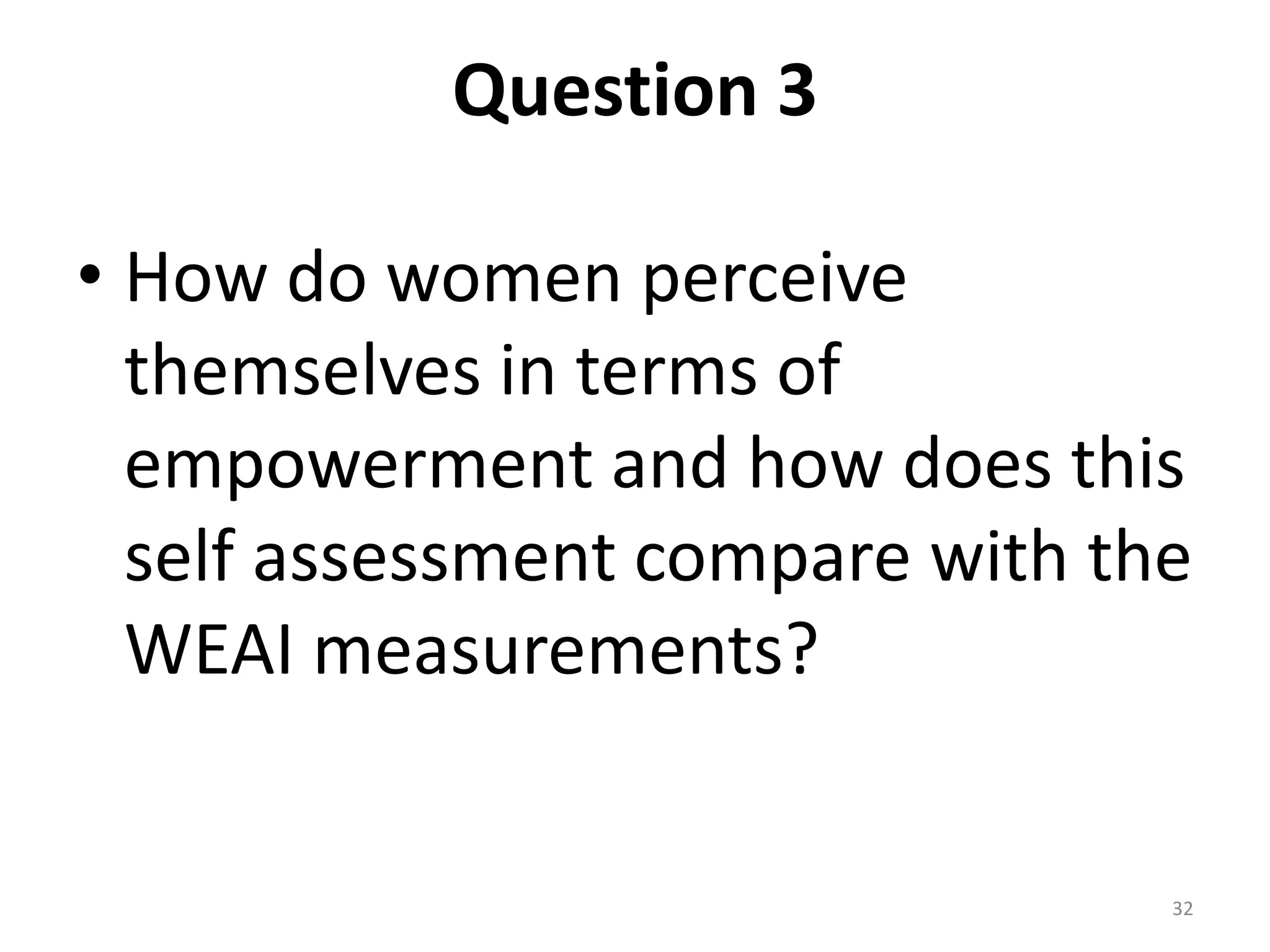
![CASE STUDIES
• Narratives describing individual women’s lives obtained through in
depth face to face interviews aiming to establish the women’s definitions
of empowerment and their self evaluation of empowerment according
to their definition
• The case studies respondents were selected from among individual
survey respondents by comparing a woman’s self ranking *on her
influence in the community] and a more objective index derived from 6
empowerment indicators
• The indicators were:
1. Input in decision making capacity around agricultural production
2. Ownership of productive capital/ assets
3. Access to credit
4. Access to extension services
5. Decision making capacity on own income
6. Individual’s leadership and influence in community
33](https://image.slidesharecdn.com/weai-evaluatingimpacts-130227005843-phpapp01/75/Evaluating-the-impacts-of-livestock-microcredit-and-value-chain-programs-on-women-s-empowerment-using-the-Women-s-Empowerment-in-Agriculture-Index-WEAI-33-2048.jpg)
